This article is a report of independent hiking from Wamena in the Baliem valley to the largest village of the Yalimo : Angguruk.
The plan
I wanted to go to Angguruk by the Gunung Elite pass and then go back to Wamena by Ninia and Soba
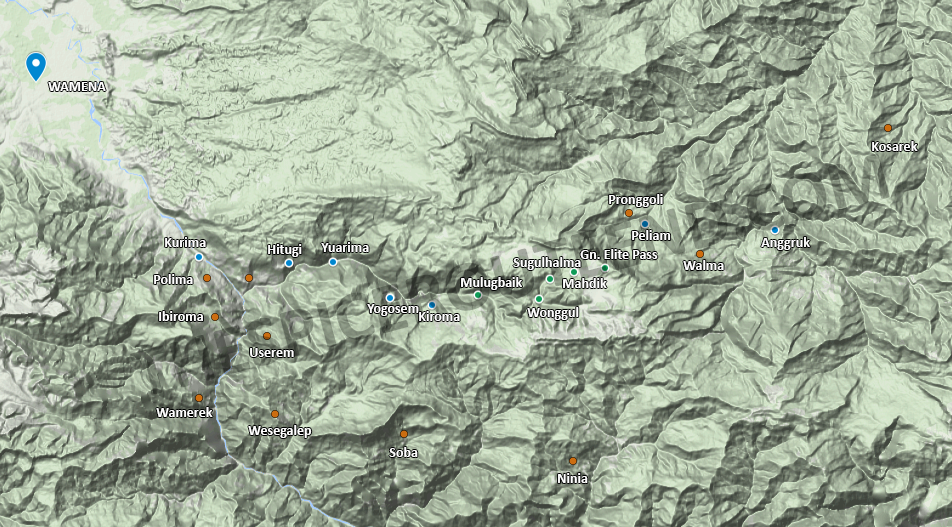
South Baliem Trekking Map – Orange dots should be ok, blue are approximative, green are outdoor spots
I made it to Angguruk but eventually took a small plane to come back. The hiking was more tiring than expected and I left a bit unprepared (I wrote another articles with practical tips that you might find handy).
I’m really into independent hiking but I strongly advise anyone against attempting to pass through the Elite Pass without a local villager to show you the way. Doing it alone even with a GPS track would be very foolish in my opinion. It doesn’t mean that it’s impossible though.
Day 1 : Wamena to Kurima
I think that Wamena is the worse city I’ve visited in Indonesia. Accommodation are shitty and expensive. Least expensive I could come up for a single traveller was 250,000Rp. Racism from Western Indonesian towards native Papuan is very strong and the economic segregation is obvious
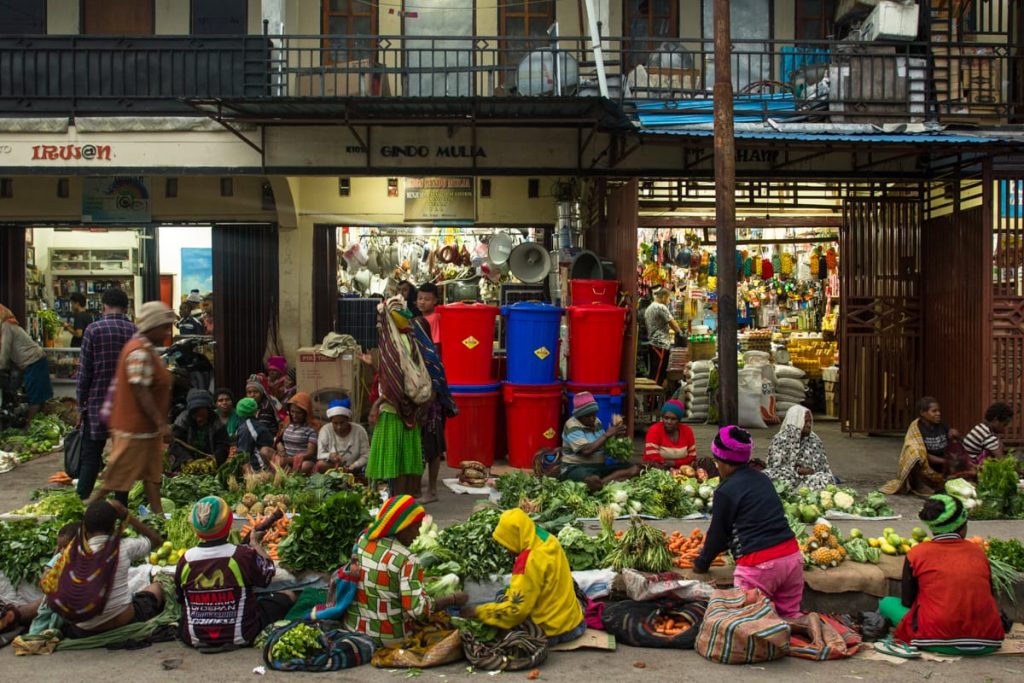
Economic segregation in one picture – Indonesian immigrants own every shop while native papuan sell some vegetable and betelnut on the sidewalk
There is really no reason to linger around in Wamena (and on top of that you might get stuck waiting from the flight back so I advise you to leave immediately).
Straight from the plane, hop on a becak (peddycab) and go to the main police station (Polres) for 10,000Rp. You can also walk for 15-20min, it’s not that far.
Even though no one asked me about it, you’re supposed to request a travel permit (surat jalan). Provide 2 pictures, your passport and an approximate travel plan. It should take you 20 minutes to get it. It’s free. Policeman were quite nice and gave me some useful tips.
If you need to shop, you have a couple of shops behind the polres. Once you’re ready, take another becak to Misi market (pasar Misi). Forgot about the rate but it is maybe 10-20’000Rp.
From Misi market, minibuses (angkot) are parked and wait to be full with passengers to then leave to Kurima. Take a first minibus for 20’000Rp until you arrive at a bridge over a stream that is not suitable for the minibus. Another minibus is likely to be waiting right across the stream and will take you until a rocky area a bit before Kurima for 10’000Rp.
After the river, you can either walk or take an ojek for 20,000Rp. Ask to be dropped in front of the police station and get your travel permit stamped. If you ask kindly, the police officer will let you sleep on the floor of the police station.
The police station also has a small shop selling rice, biscuits, noodles, sugar …
Day 2 : from Kurima to Hitugi
The trail to Hitugi and then Yogosem is very simple and don’t require any guide. From Yogosem the trail gets much harder to follow.
I recommend that you look for a guide in Yogosem. On my side, I met a guy I had a good feeling with in Hitugi and decided to go with him (more advices on picking a guide in the dedicated article).
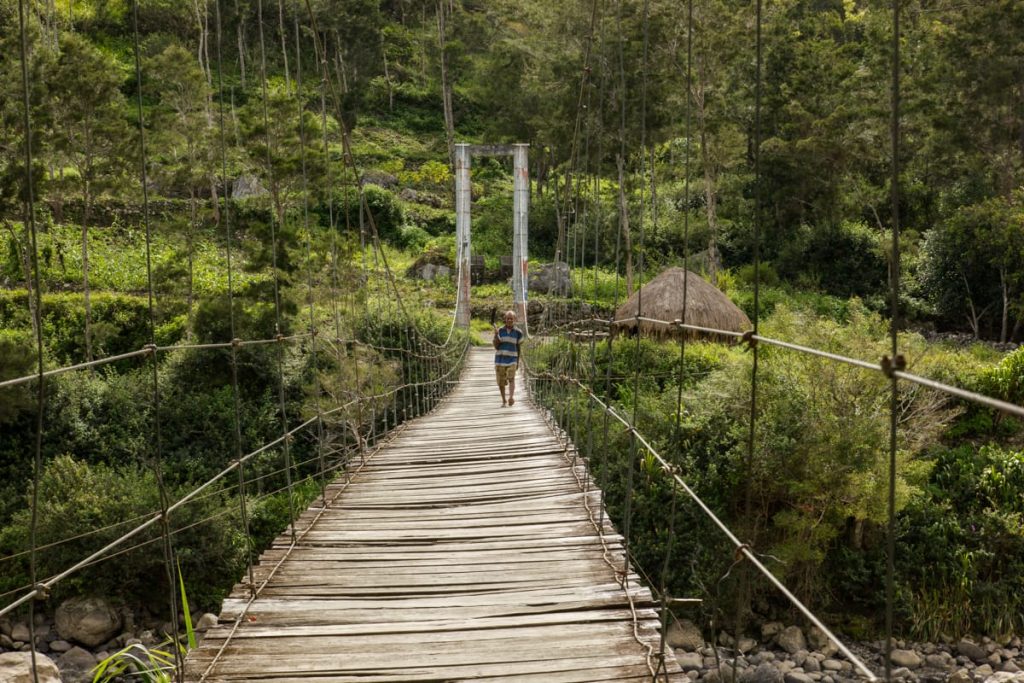
Trail from Kurima to Hitugi starts by this bridge over Baliem river 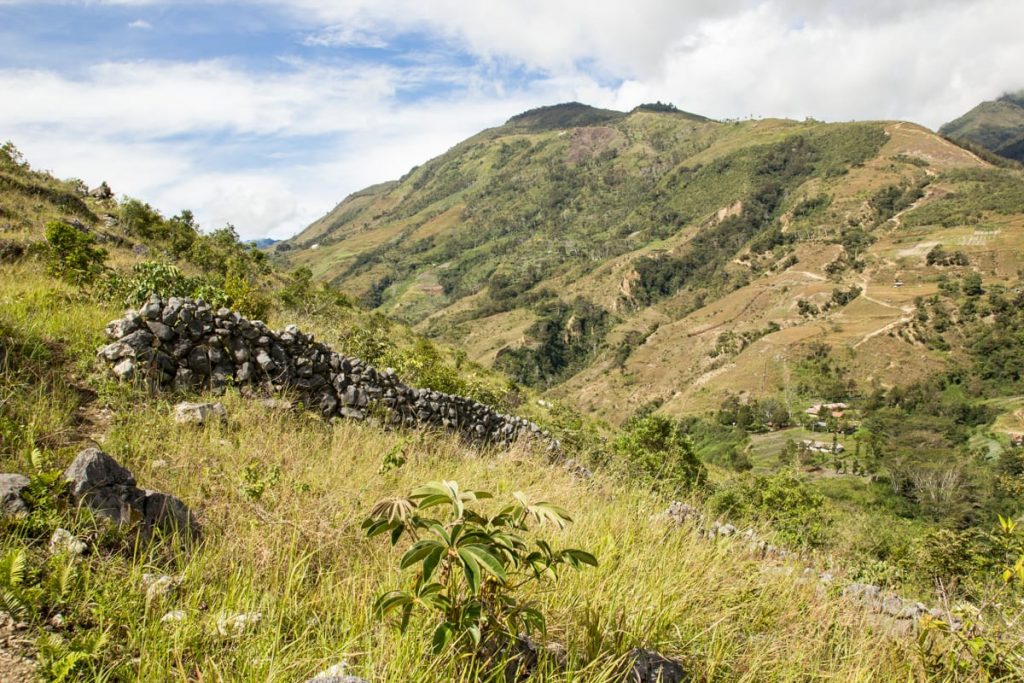
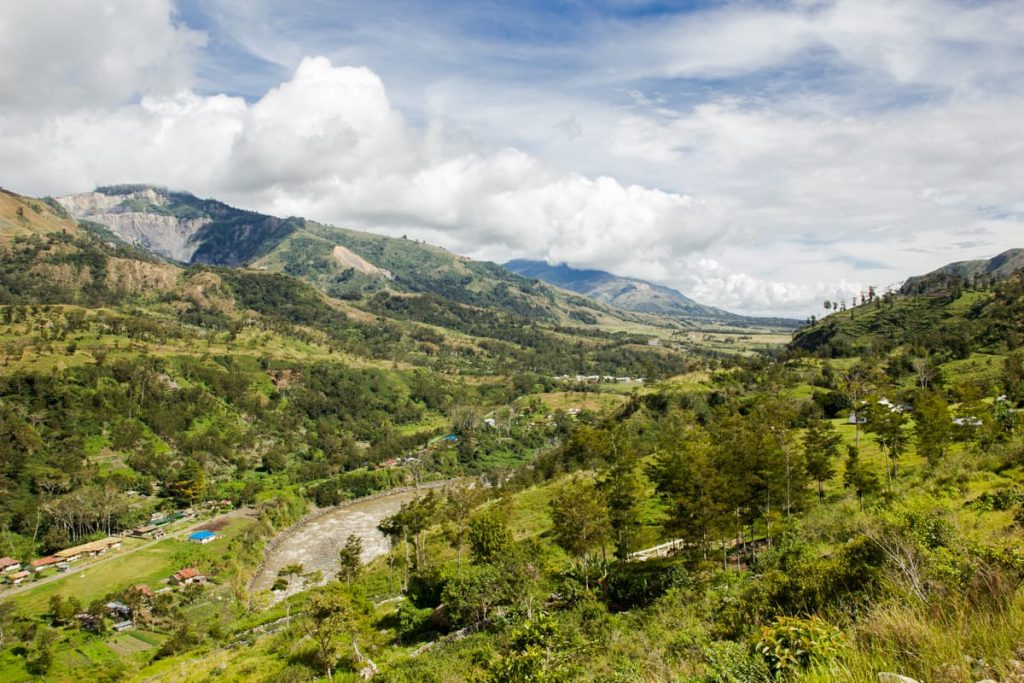
The Baliem river viewed on the road from Kurima to Hitugi
You will pass a few other small villages on the way : Iginem, Mugi and Ugem.
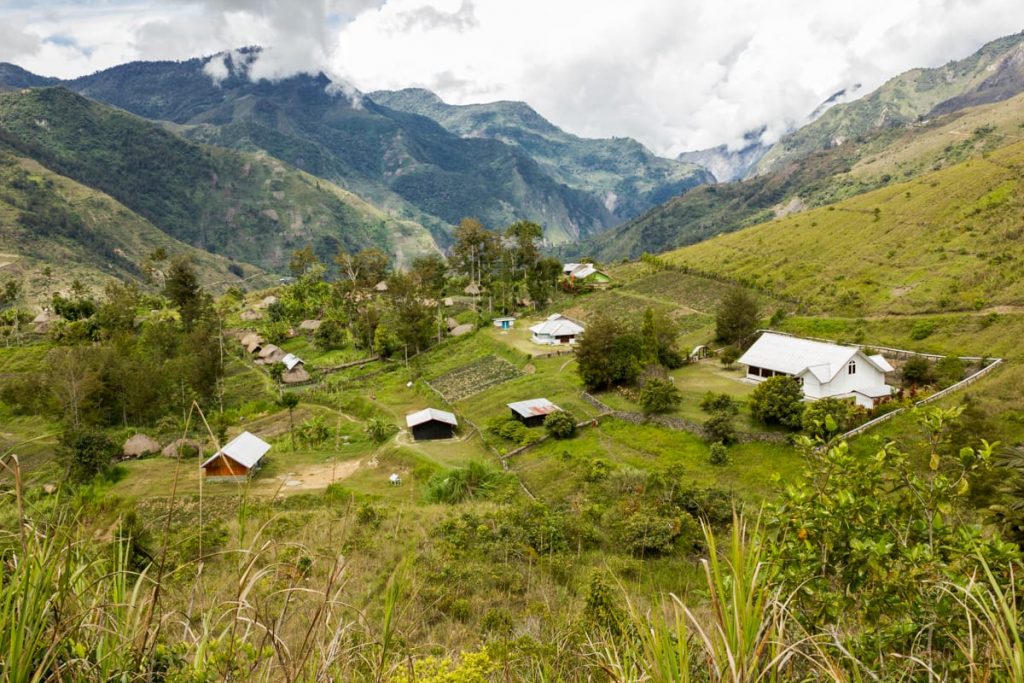
Ugem village
From Ugem you can either take the upper trail that takes you directly to Hitugi or the lower one that passes through Nyogoseh village and then up to Hitugi.
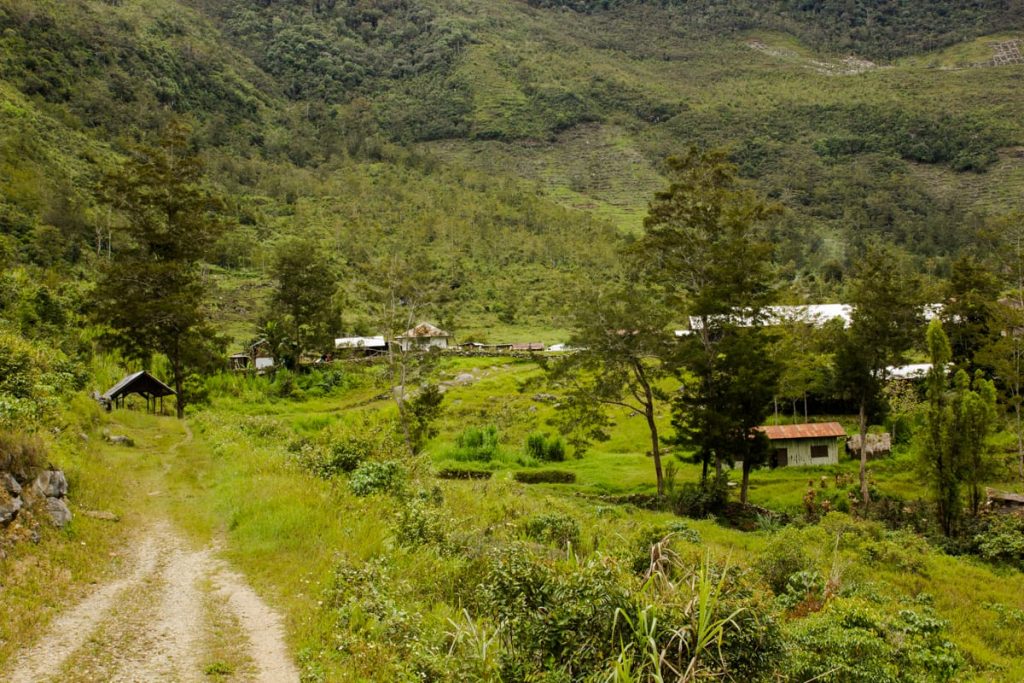
Arriving in Hitugi village
It’s possible to hike from Kurima to Yogosem in one day but rain was coming and I decided to stop in Hitugi at noon on the first. I also knew that longer hiking day were ahead and I wanted to take some time discussing with inhabitants, wander in the village and get my first sight at Papuan highland culture.
There is no formal accomodation in Hitugi but a homestay is easy to arrange. Just ask around, everything was agreed in 10 minutes when I visited (in Indonesian, better bring a good phrasebook if you cannot speak it)
In case you were still wondering, there is no “naked cannibal” to photograph (unless you pay for it so they arrange a “show” for you) but the local way of living is still quite preserved.
The traditional thatched-roof round house (honai) are now side by side with more modern building with tin roof. Regularly you see naked kids and pigs running out of the honai.
Men and women live in separated house. Kids live with women up to a given age.
The remnants of the former war-mongering way of life are still present. This old man joined us in the kitchen to seek shelter from the rain. He was really thin and looked a little bit senile. He did not speak Indonesian so the discussion wasn’t easy. I was puzzled by his missing eye and asked how it happened.
He eventually showed me many scars from battle injuries. I got told that his eye has been lost to an arrow years ago. He also had chopped a chunk of its ear in the wake of the death of a relative. Like many men, he has a hole inside his nose even though he doesn’t wear bone anymore.
Villagers asked me about my plans and someone offered me to take me to Angguruk. I had a good feeling with him and I agree to hire him for 200’000Rp a day starting the next day (it’s a lot of money in such part of Papua, but it felt that it was a fair price given I was planning to leave him behind once in Angguruk to get back to Wamena another way).
Walking time : 2h50.
Accomodation : 100’000Rp
Food : 0 (they told it was included with the accomodation, rice and ubi leaves)
Day 3 : from Hitugi to Yogosem
I started the day wandering in the village.
Then we started walking. It takes about 1 hour to reach Yuarima.
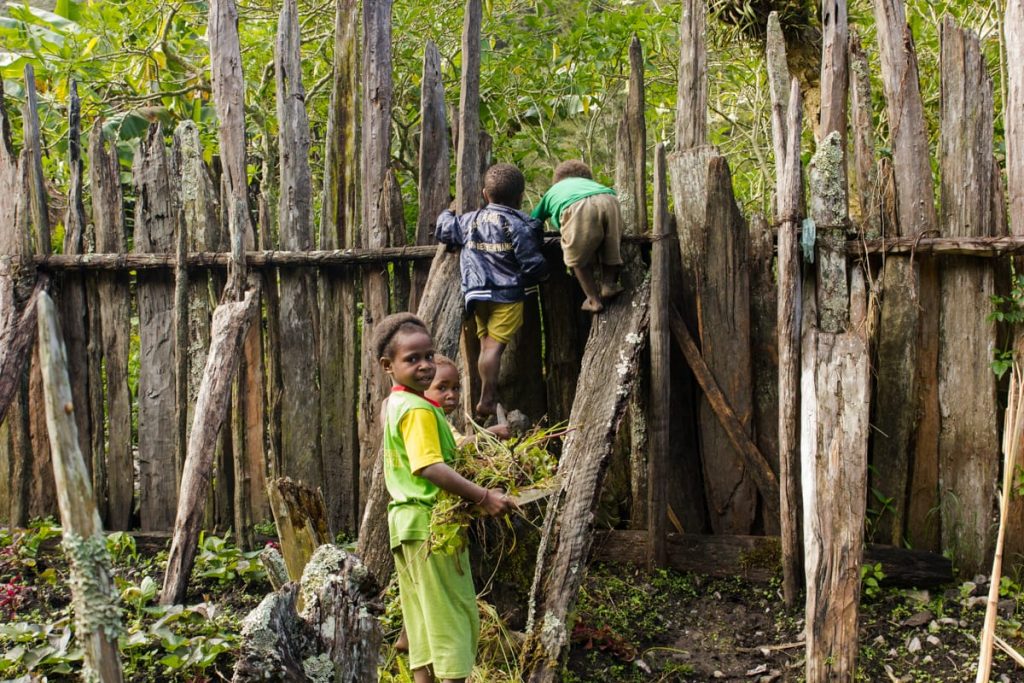
Fences are everywhere, to prevent the pigs from forraging in the garden 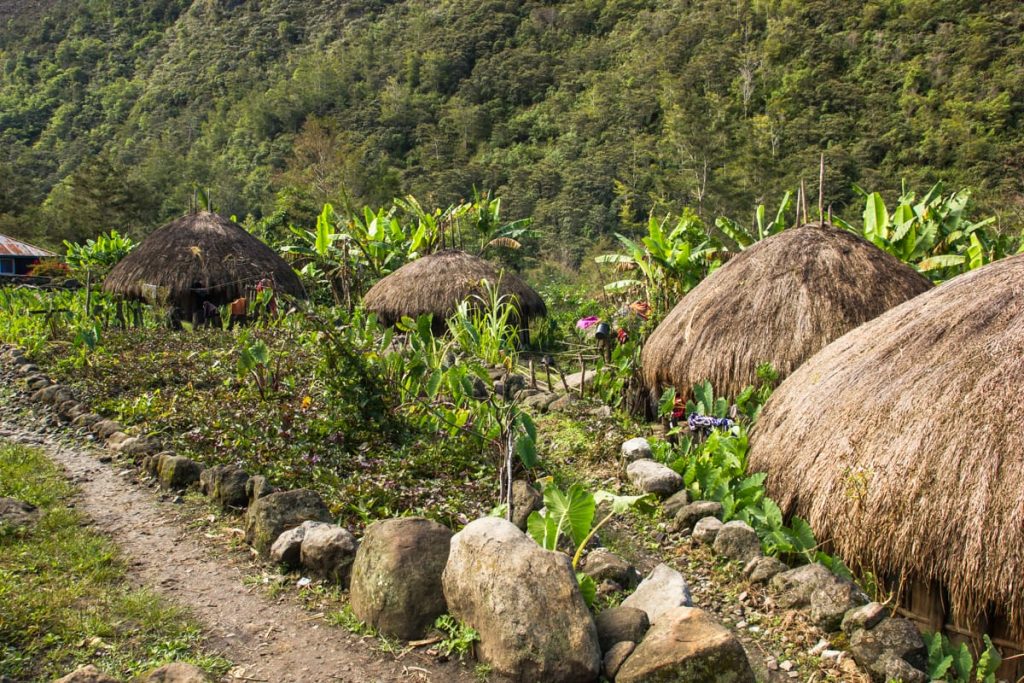
Yuarima, a Dani village on the road from Hitugi to Yogosem 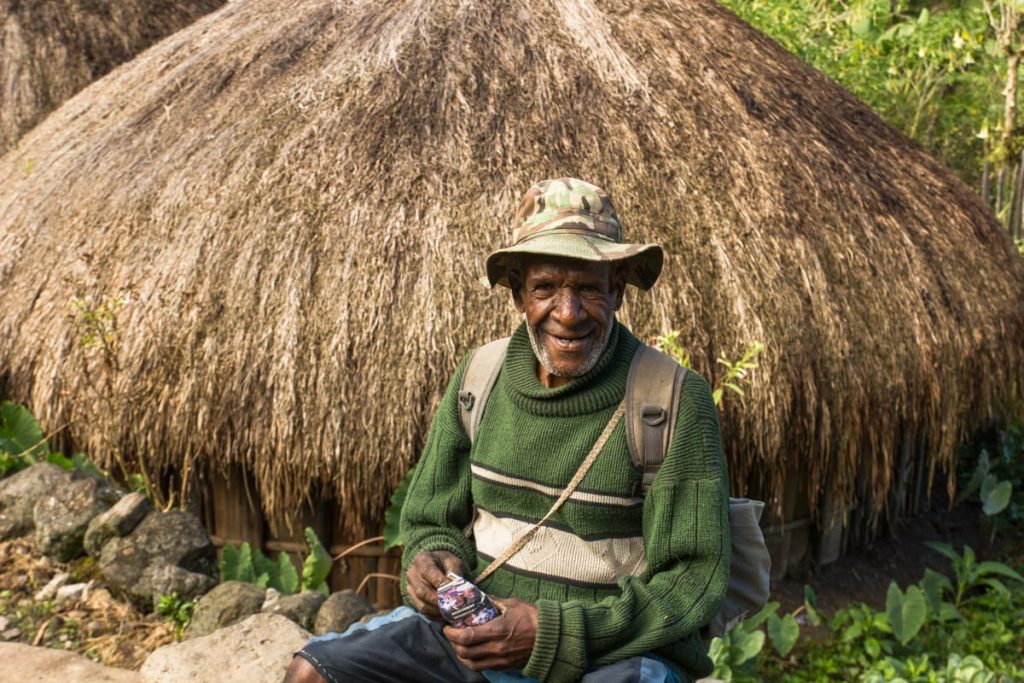
Yahuda, a Hitugi villager turned guide for the occasion
Keep walking after Yuarima and take the bridge on the right.
It took us 3h40 to walk from Yuarima to Yogosem.
Yogosem is a good place to look for a guide to take you to Angguruk even though it’s possible to reach Kiroma on your own. But Kiroma is quite small so it might be easier to get your guide in Yogosem.
I was sleeping in the village head house where I saw a scene I wasn’t expecting : kids watching TV (a common sinetron with Indonesian actors). It didn’t last long though because the battery quickly ran out of power. Then everyone went out to play outside.
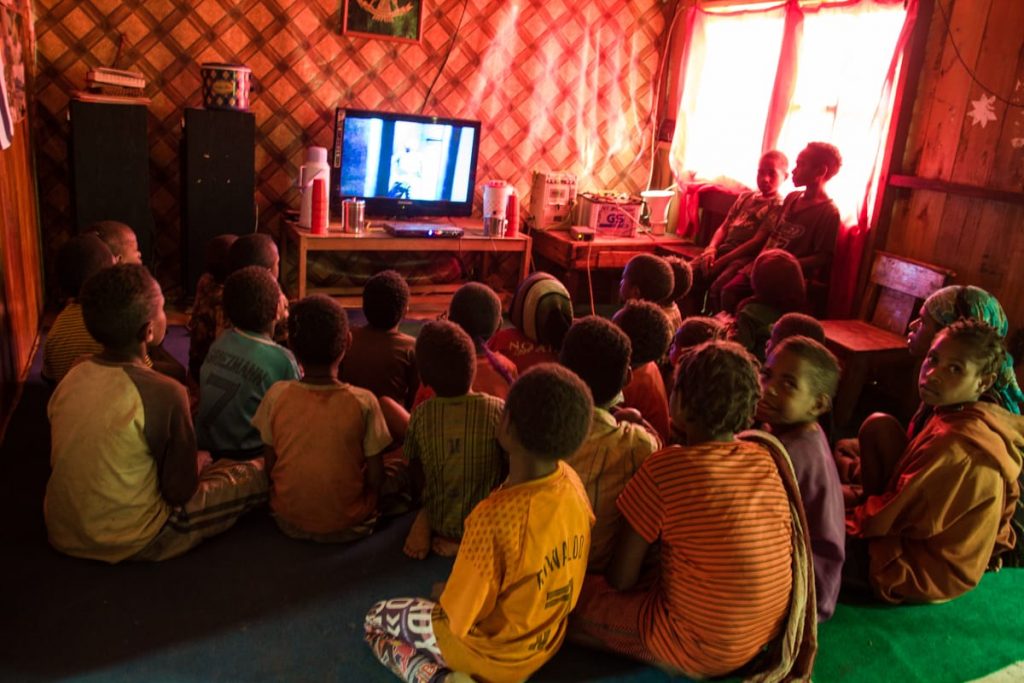

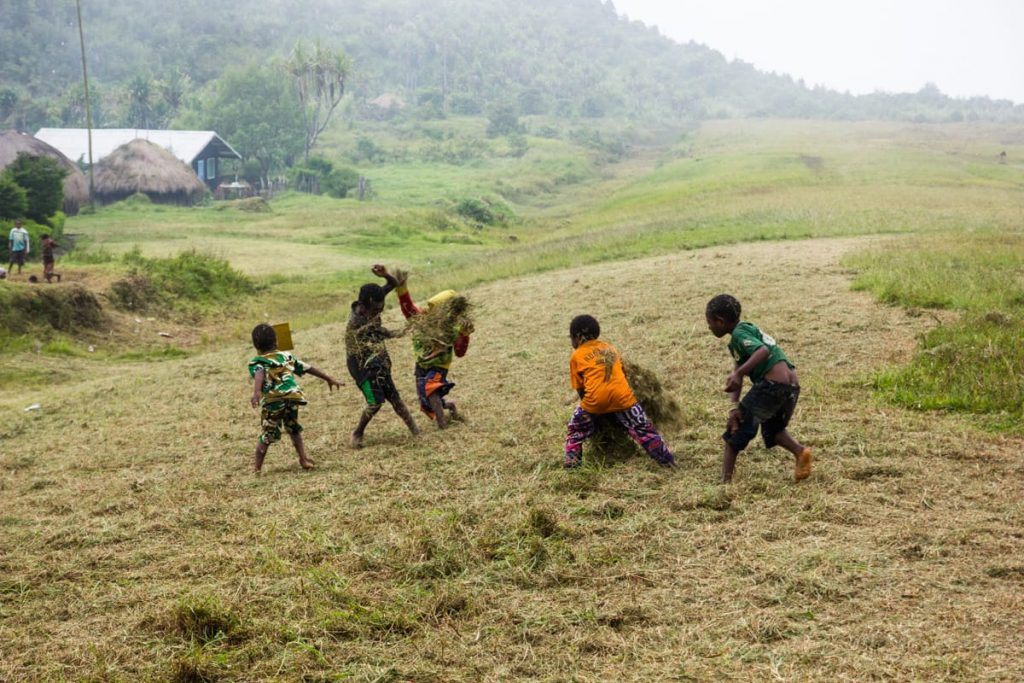
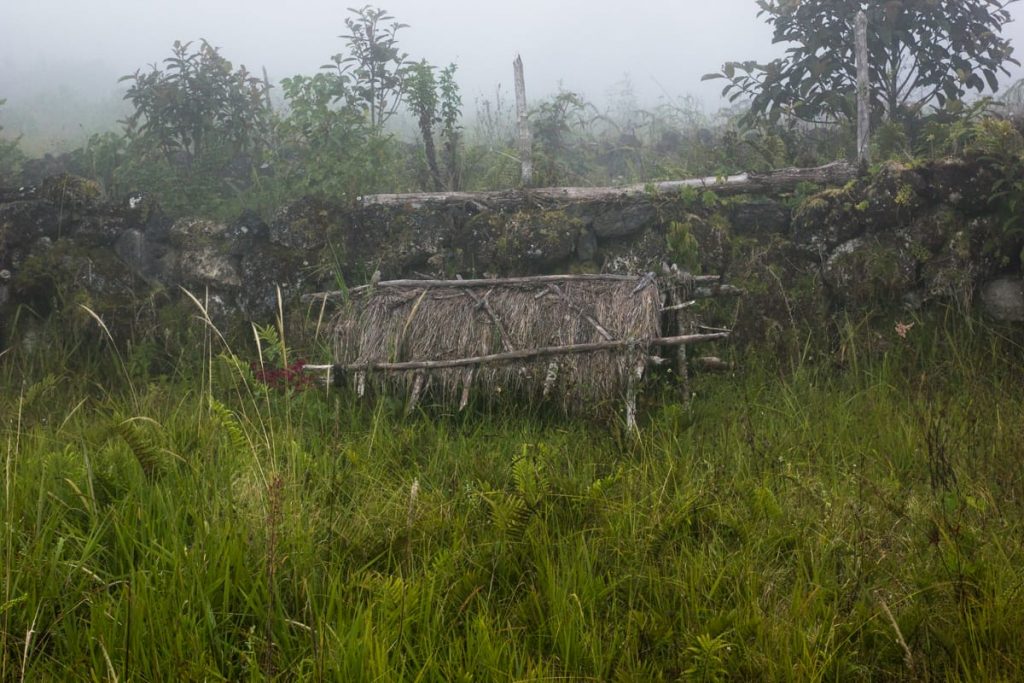
A tomb 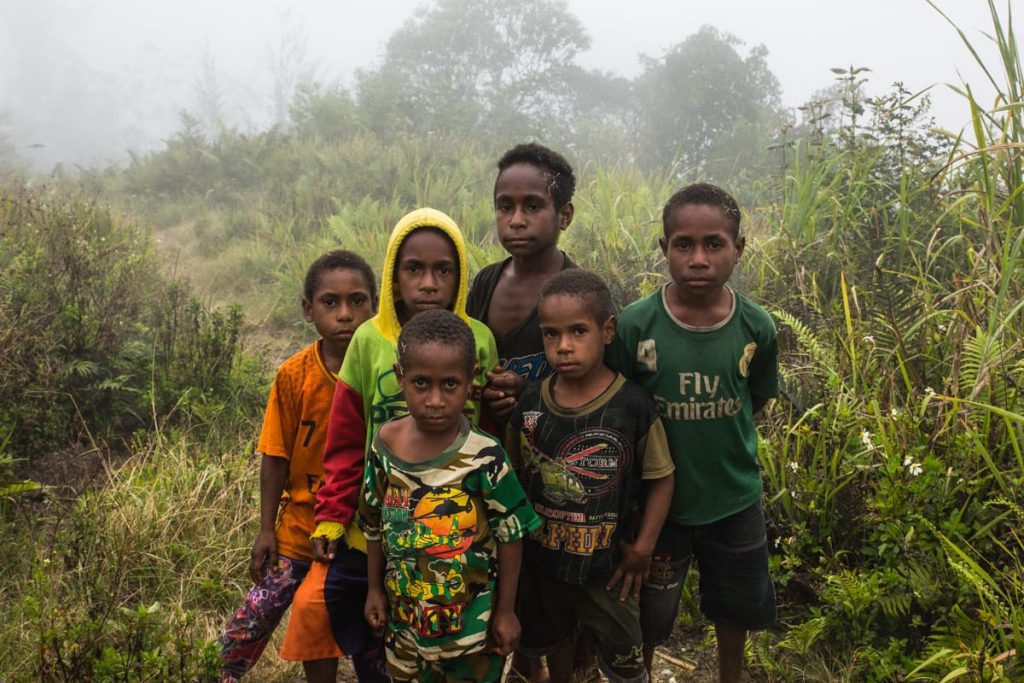
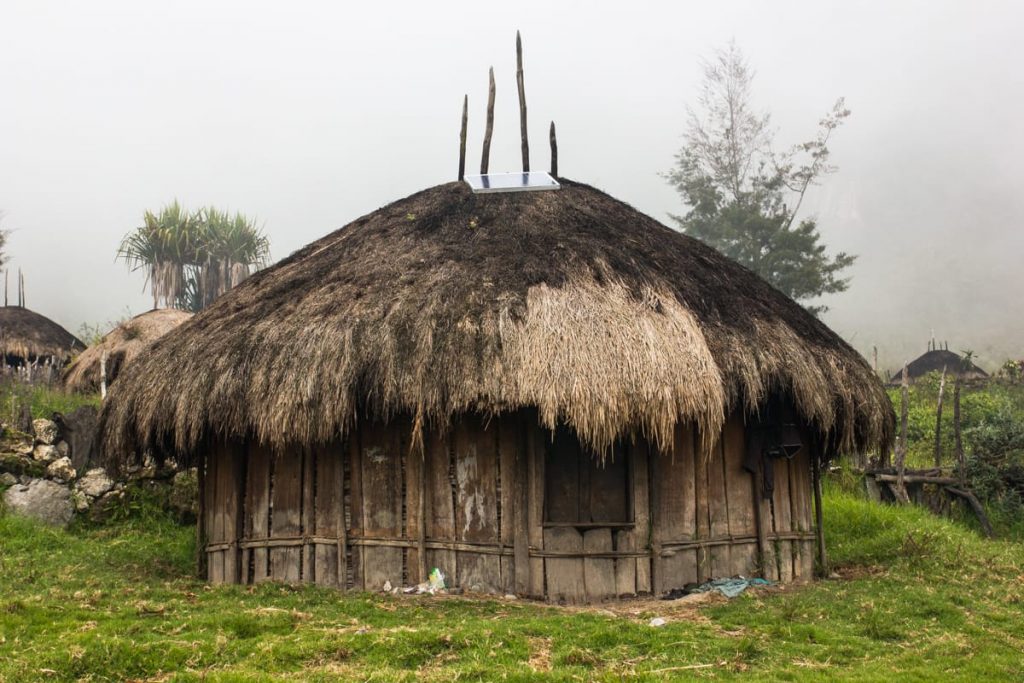
Honai with a solar panel on top
Yogosem has an airstrip and is visited at least twice a month by plane to bring the onion production to Wamena.
It surprised me that villagers were not breeding chicken or rabbits. They explained to me that dogs would kill them.
Walking time : 4h40.
Accommodation : 100,000Rp (the guide slept in the men honai, I slept in the head of the village house).
Food : 50,000Rp for 2 meals for me and my guide
Day 4 : from Yogosem to Wonggul
It takes 1h45 to reach Kiroma from Yogosem. The trail starts to become confusing at some points.
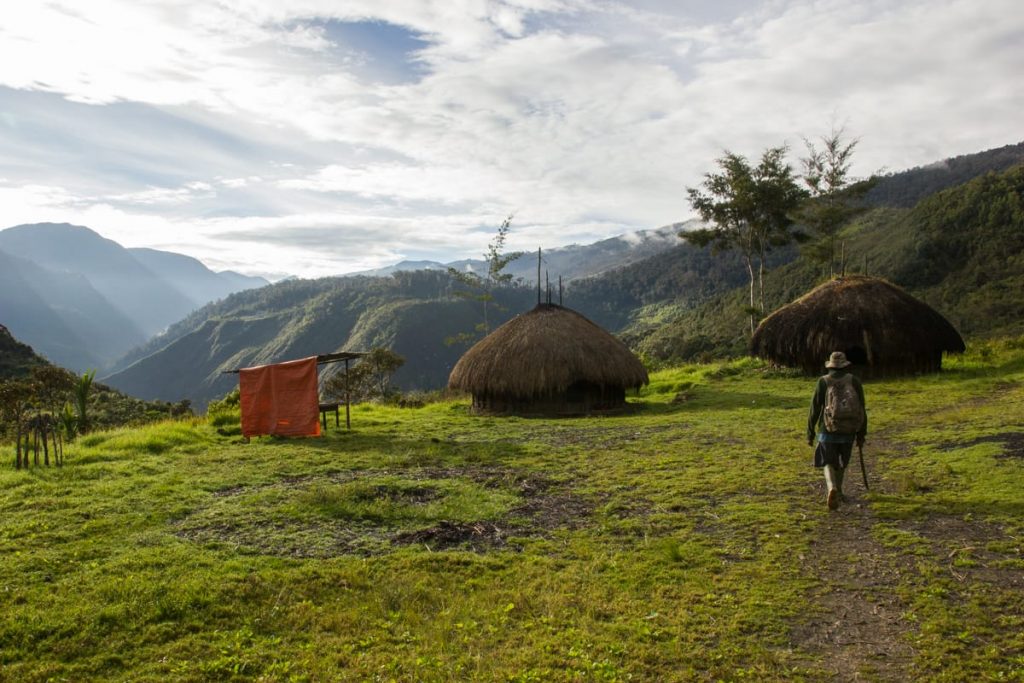
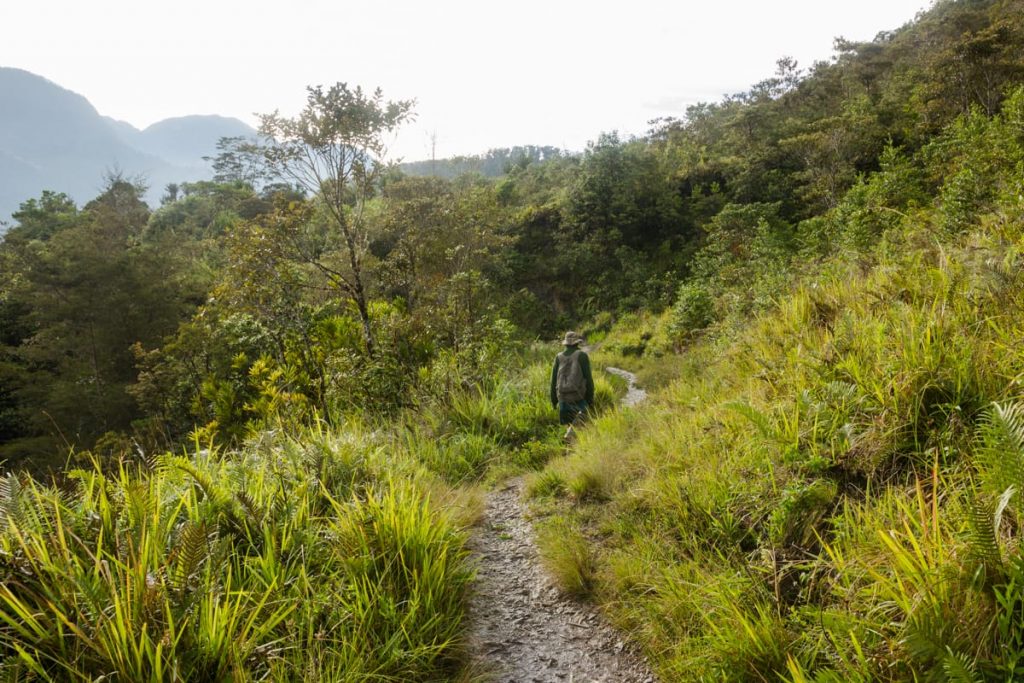
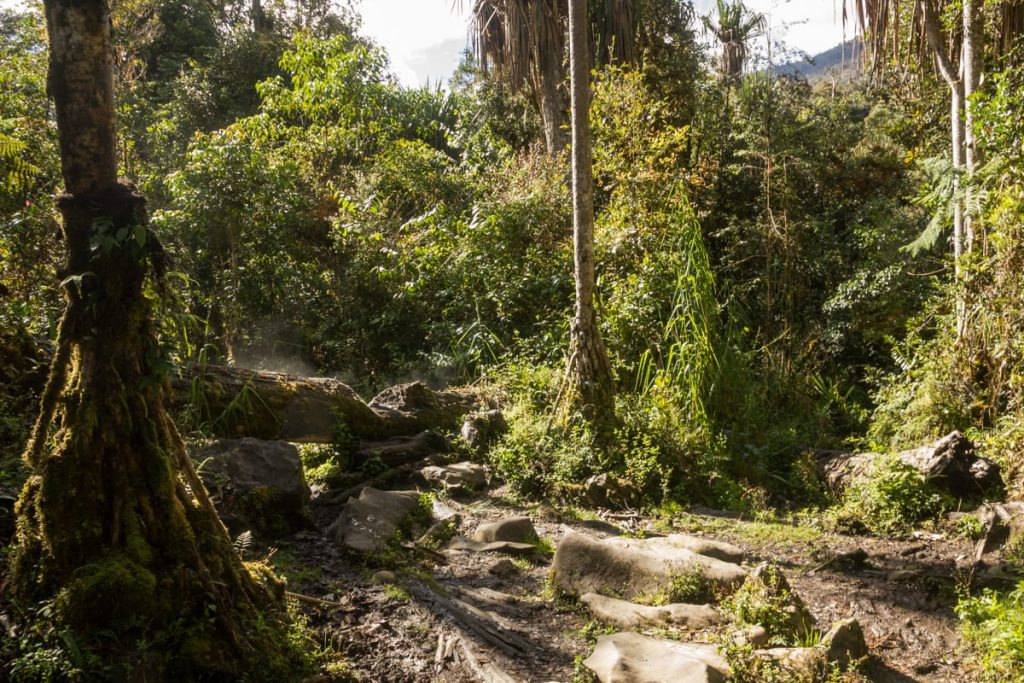
When you reach this intersection (about 1h after Yogosem), take left 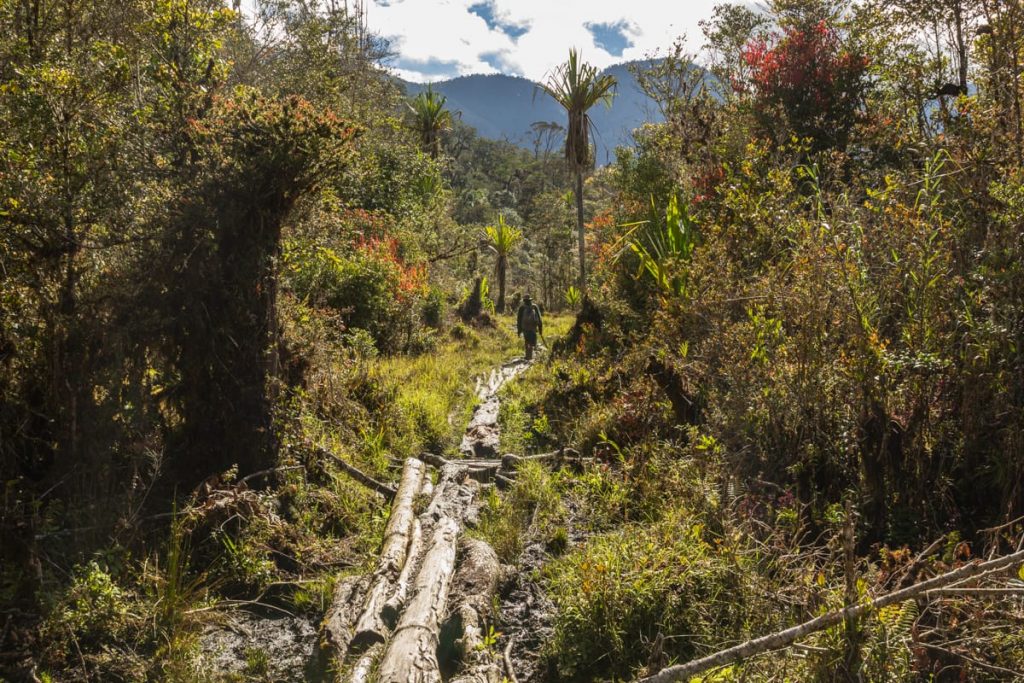
Trail starts to get muddier 
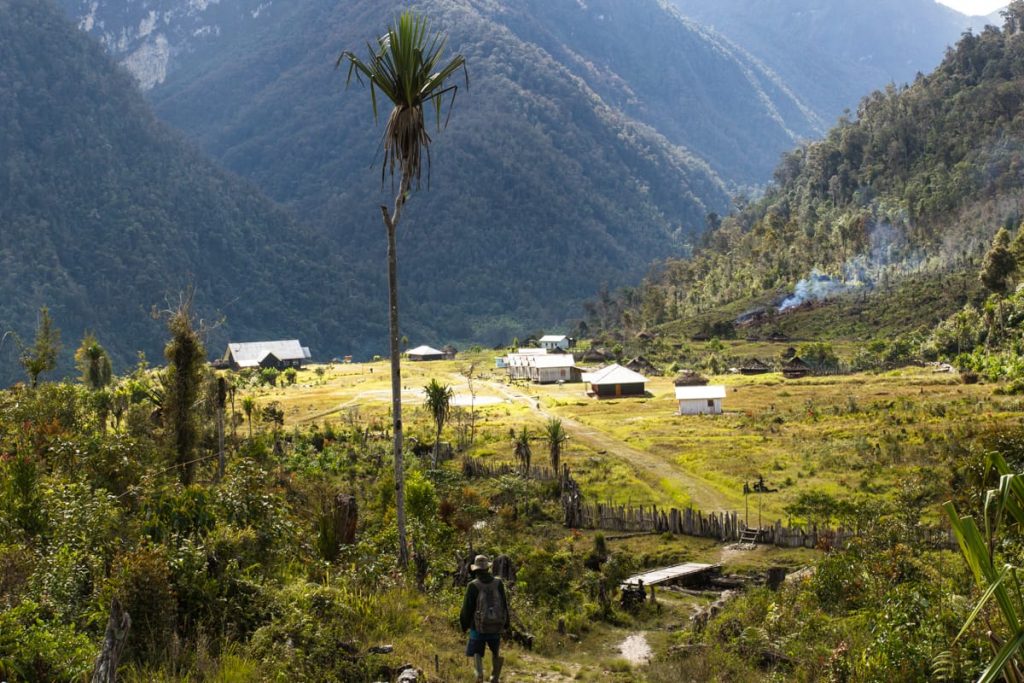
Kiroma village
Kiroma is the last village before the Mount Elite pass. Unless you are a natural walker like native Papuans you will very likely need to spend a nigth outdoor ; so better buy some food. You won’t get any supply until you reach Peliam village.
I still had biscuits and noodles, we bought some ubi (a kind of sweet potato) in Kiroma, about 15’000Rp for 10 pieces.
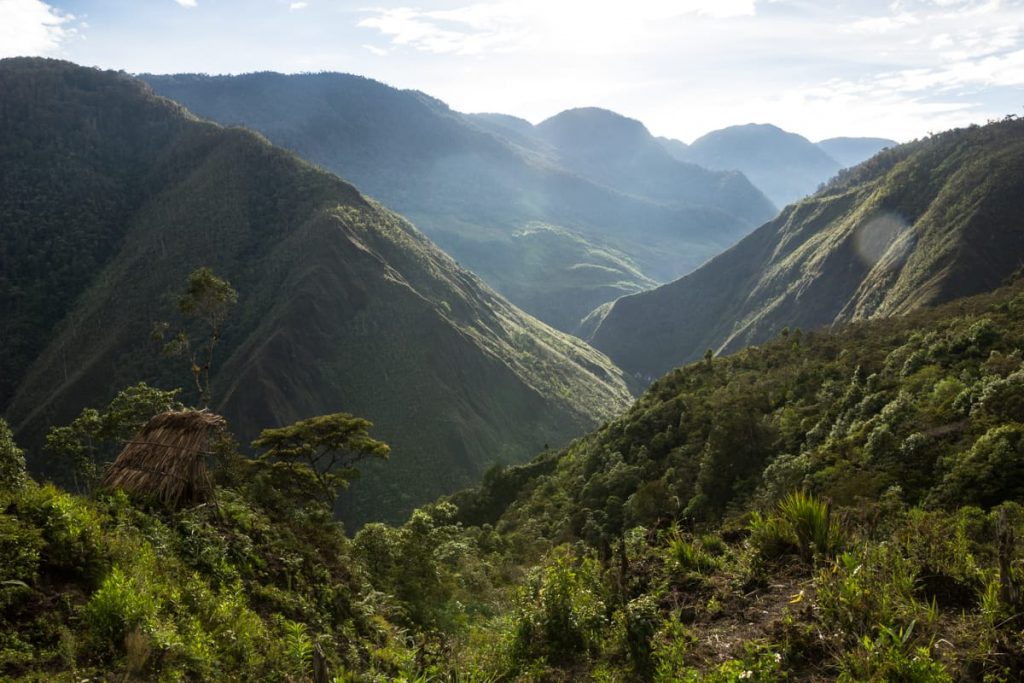
Beautiful view in the morning out of Yogosem. Too bad I forgot to clean my lense
From Kiroma, the hike gets more serious as the trail less practical. It takes about 2 hours to reach Mulugbaik, the name given to a lonely honai built along the way for travelers to spend the night.
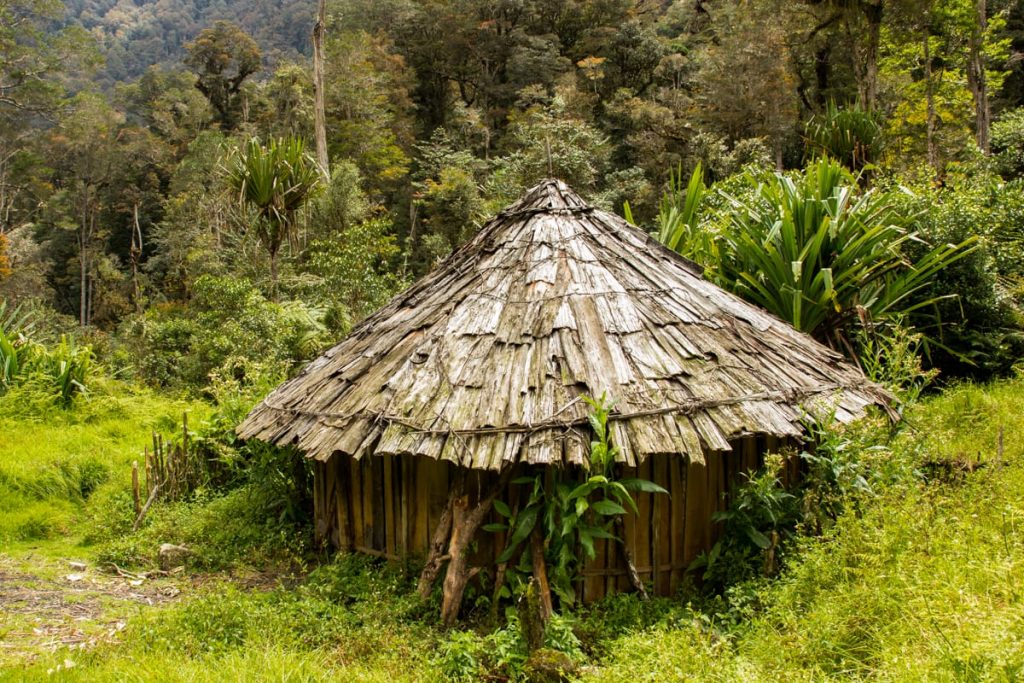
Mulugbaik
From there we spent the following 2 hours hiking along the river. Yahuda kept crossing the river, knowing exactly where the trail was the easiest to hike.
We decided to spend the night in Wonggul, which is a shelter in the moutain. It might be better to spend the night further up in Sugulhalma (another 1h45 hike from Wonggul), which is a more protected from the wind.
While I rested, my Yahuda sets up immediately to cut enough wood to fuel a fire throughout the night. I would soon realize this was truly crucial.
For dinner, we had ubi and fire-cooked instant noodles :
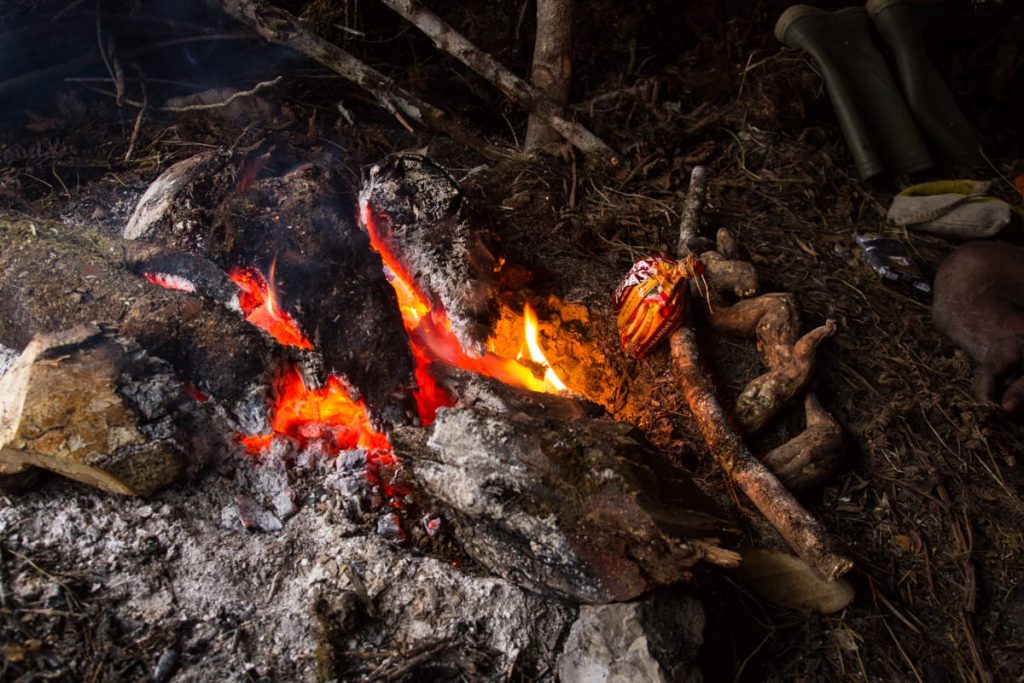
Fire-cooked noodles : fill the bag with water and then tie it up with a blade of grass. Then let it cook near the flame, the water inside prevents the plastic from melting
The night was cold, I had brought with me a small sleeping bag which was especially useful this night. Yahuda barely slepts near the fire. Without any camping gear, Papuans often spend the night as close as possible from the fire, unable to sleep because of the cold outside of the honai.
Walking time : 7h20
Accommodation : free (stargazing included)
Food : 40’000Rp for two (price of the food bought earlier).
Day 5 : from Wonggul to Peliam
This was a though hiking day, walking in the mud and water for long hours.
1h45 from Wonggul, we reached another shelter called Sugulhalma. Another 2h10 and we were able to see the beginning of a large plateau that reminded of the Dead Marshes in the Lord of the Rings. This place is called Mahdik, the plateau itself is called Holokkaka.
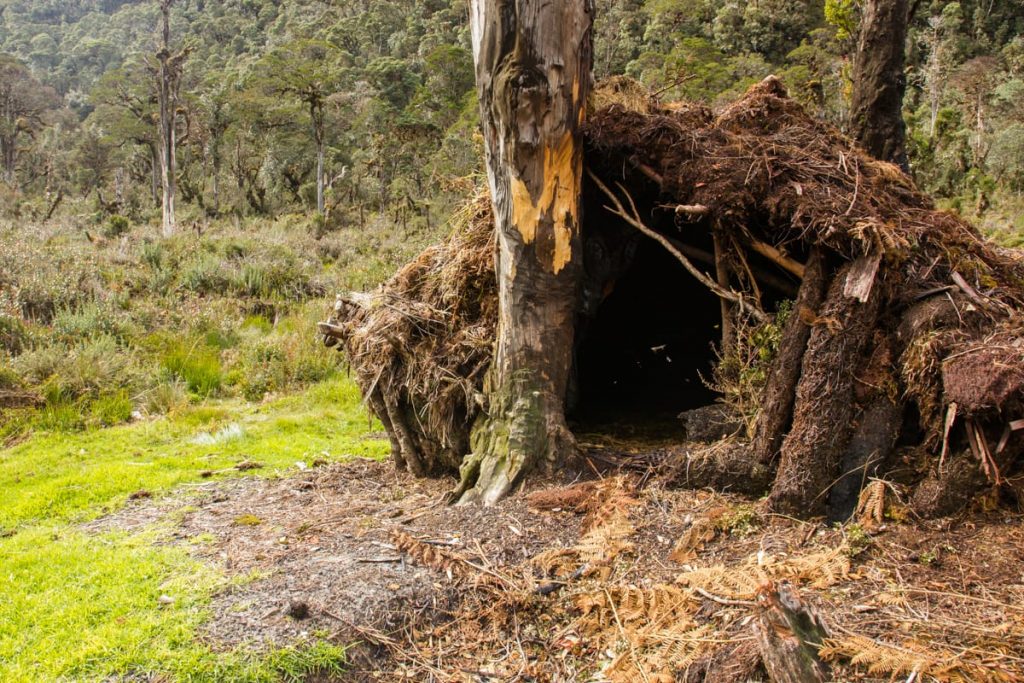
Sugulhalma shelter 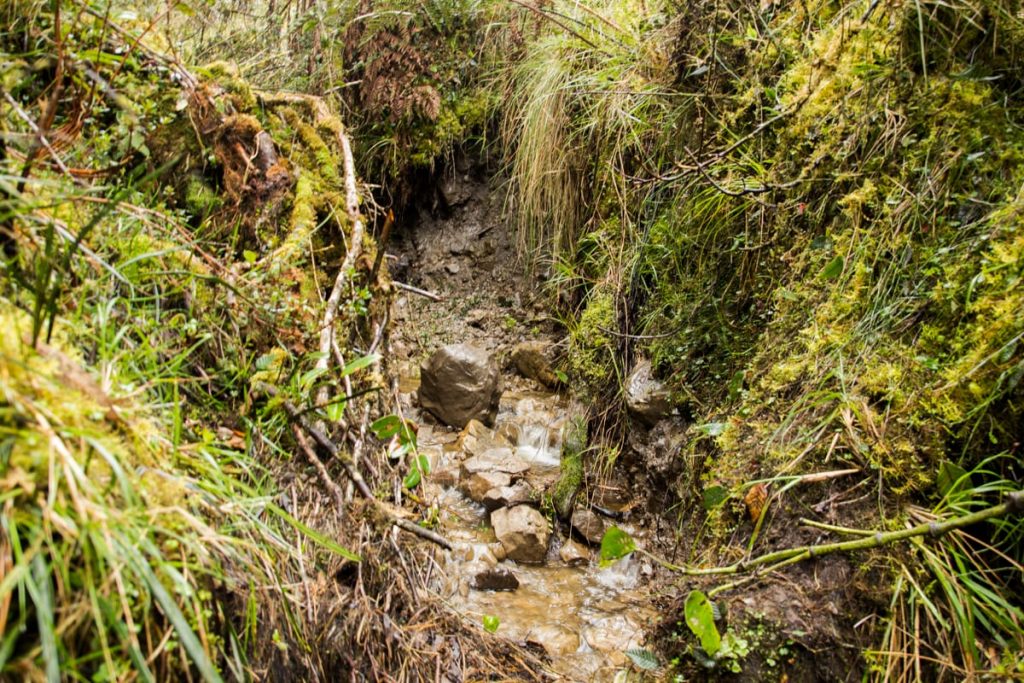
Classical road condition on this day 
The muddy trail 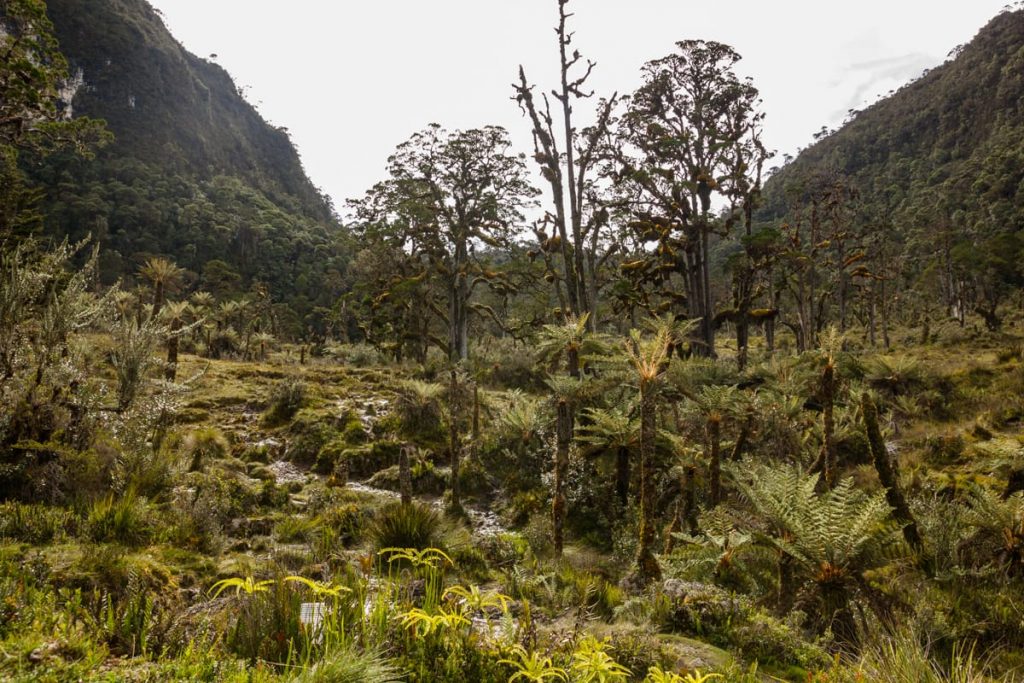
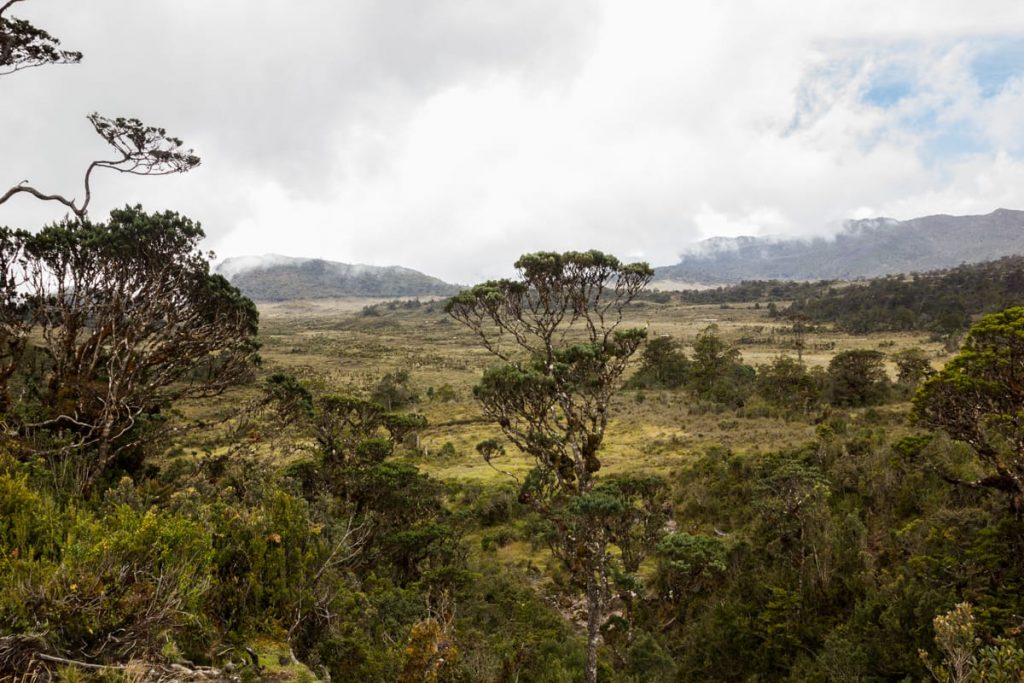
View from Mahdik, about 10h from Kiroma.
Crossing this plateau took us another 1h30.
The end of Holokkaka also marks the start of the moutain pass. Climb it down took us about 1h30. From there, another 3h of hiking are necessary to reach the village of Peliam. It’s also possible to hike directly to Pronggoli
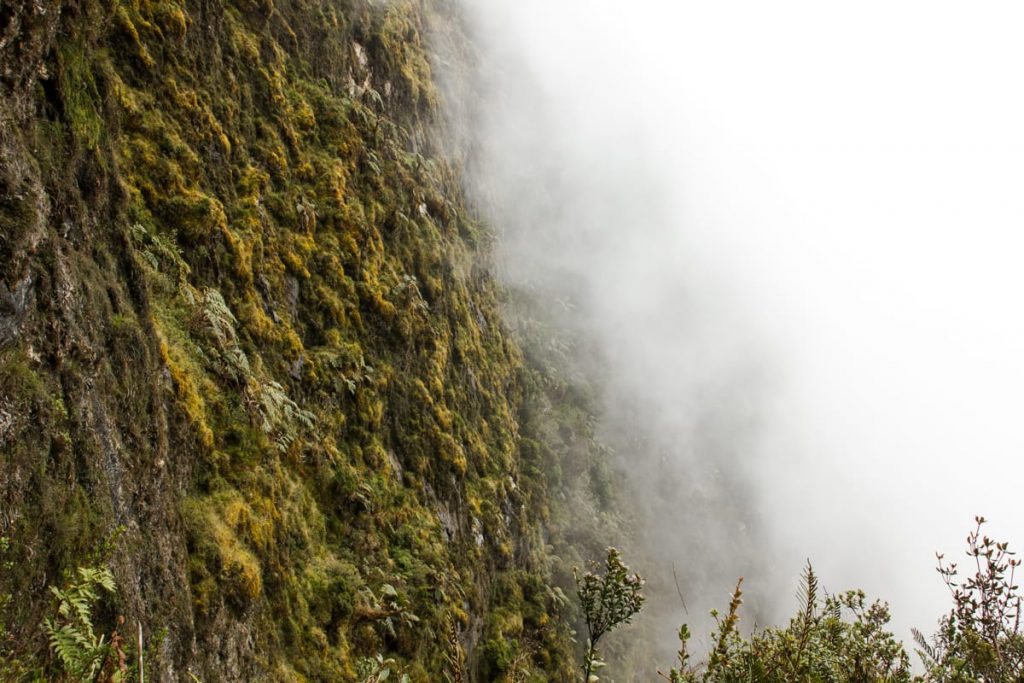
Slightly steep 
This cave on the way down can be used to spend the night 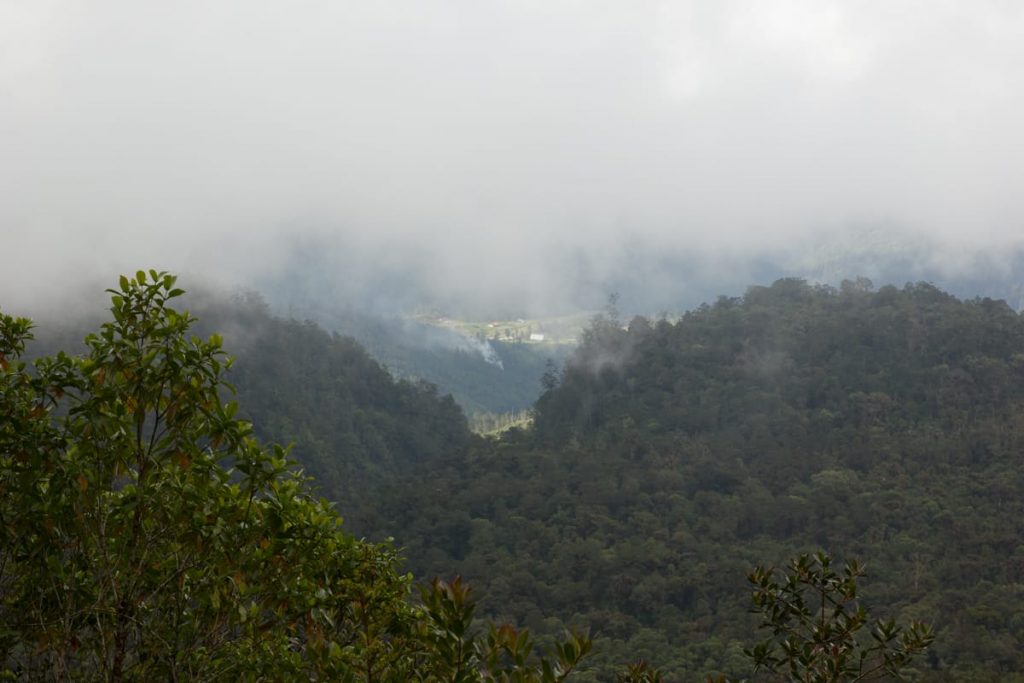
First sight of Peliam. But still 3h to go ! 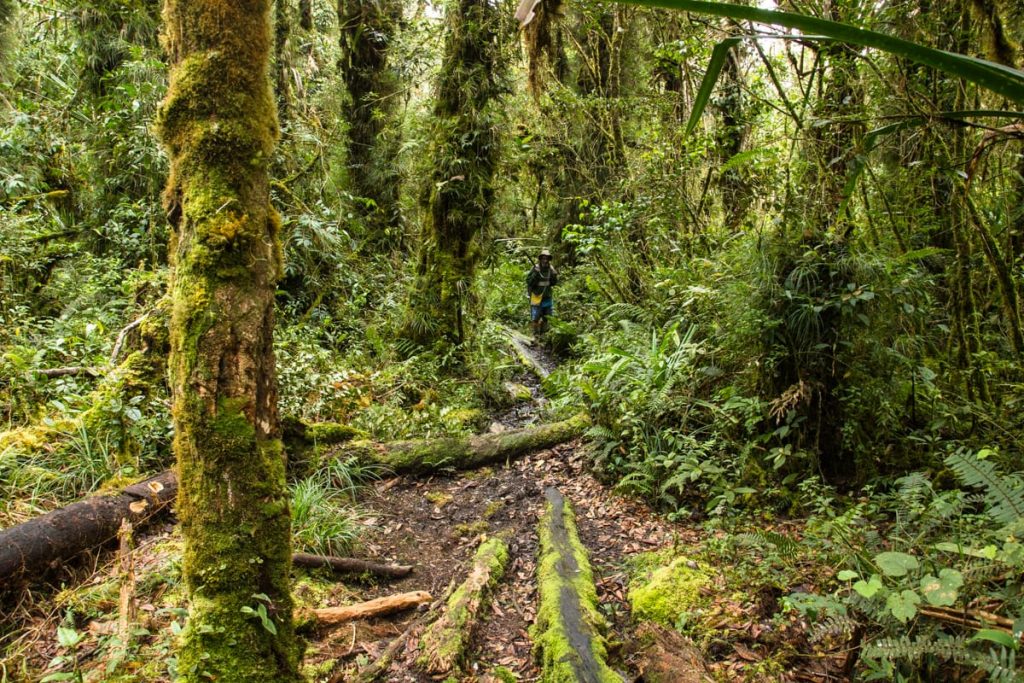
Another 3 hours walking through the forest 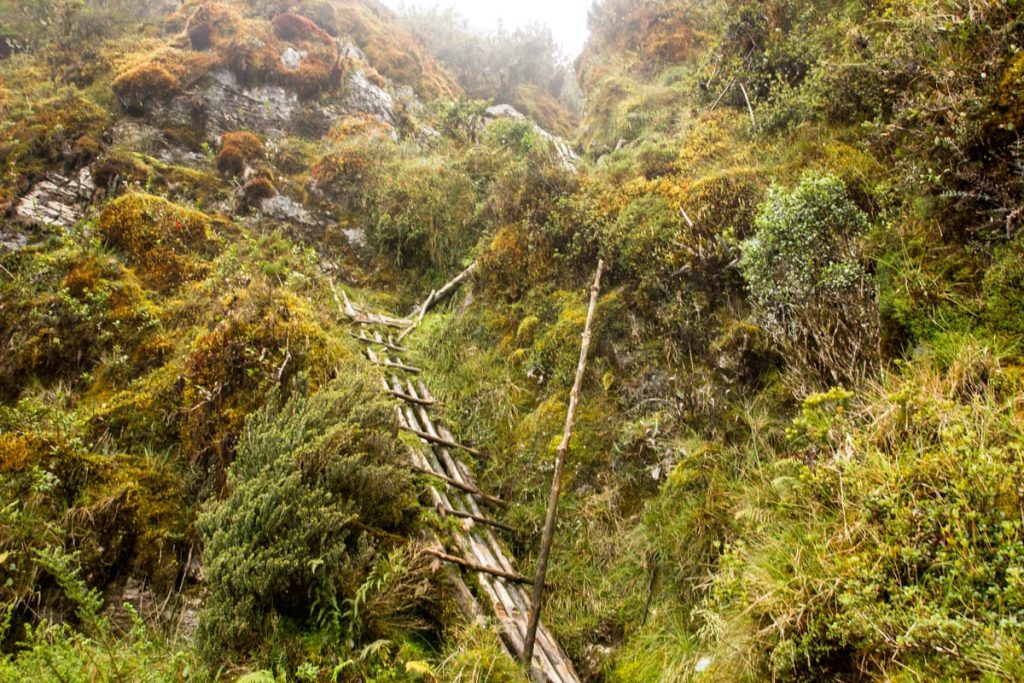
Be very careful about the ladder one of them was wrecked
The area around Peliam had maybe the nicest landscape I saw during my trek.
Walking time : 9h40
Accommodation : 100’000Rp
Food : 0 (we ate Ubi and food I bought on the previosus day)
Day 6 : from Peliam to Angguruk
I spent some time in the morning in Peliam village before leaving to Angguruk.
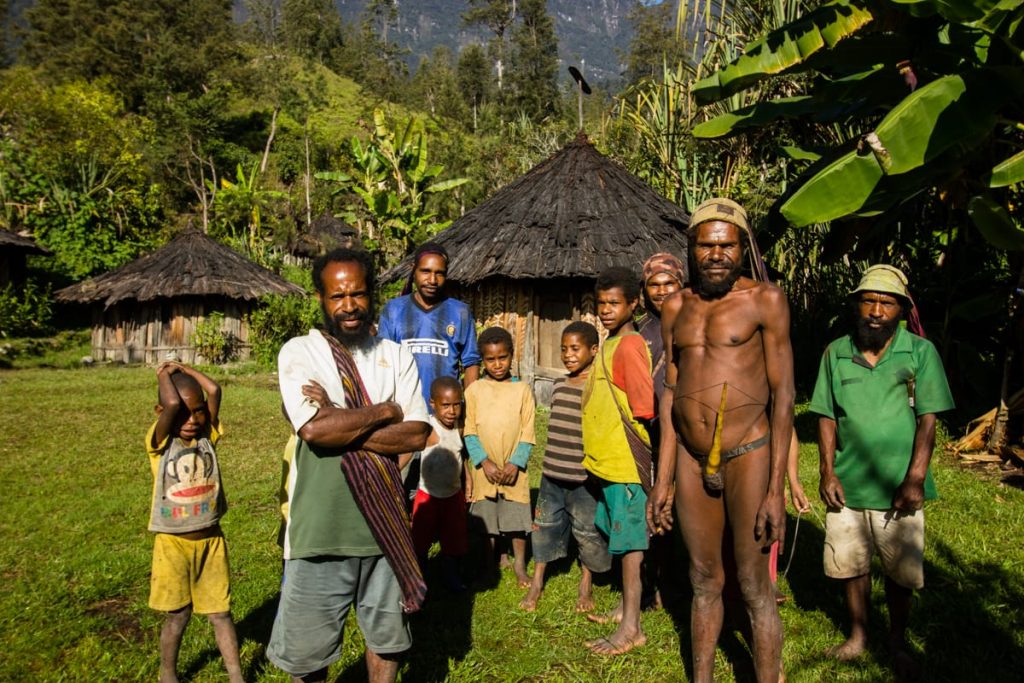
People of Peliam village – Most of the people now wear western clothes 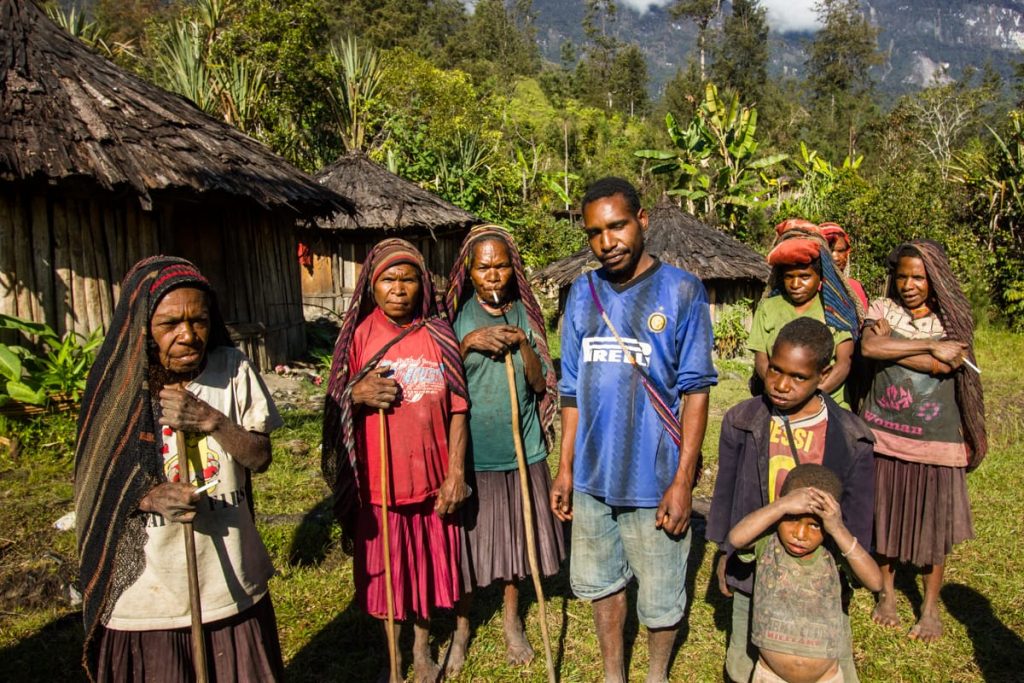
Notice how women and men stay together
It feels like the local way of life has not changed much since centuries. Rice has been introduced in daily meal on top of ubi, steel machete have replaced stone axes, rupiah bills the shell money.
But most of the villagers still go barefoot, climbing up and down everyday to work in the garden. There is no animal to help, and not much mechanical gear (a hunting rifle, a chainsaw or portable lawn mowers for instance).
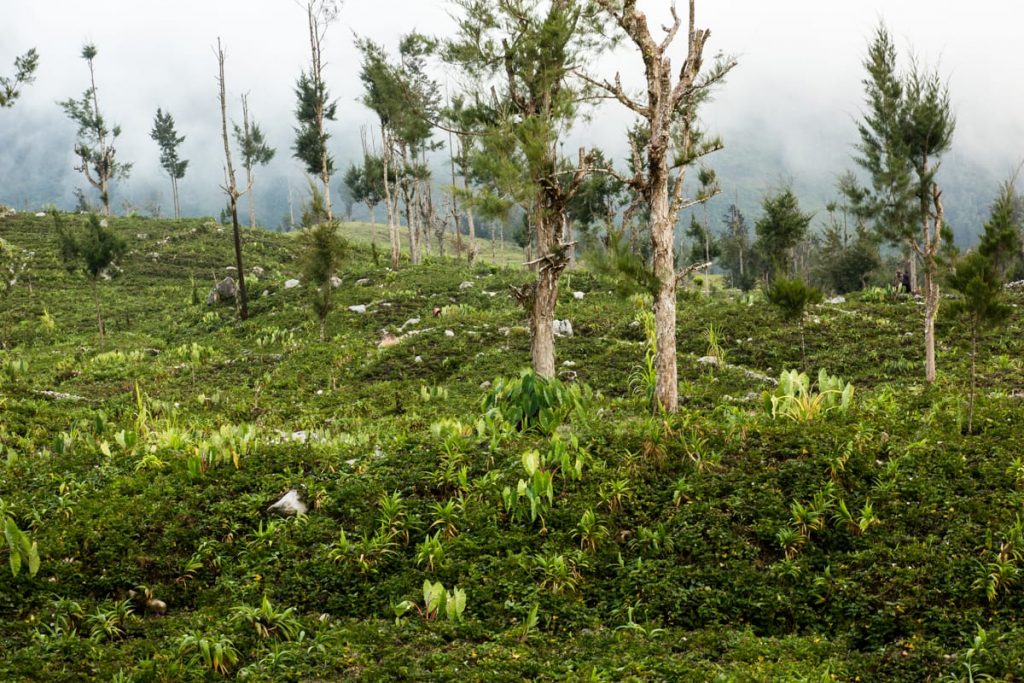
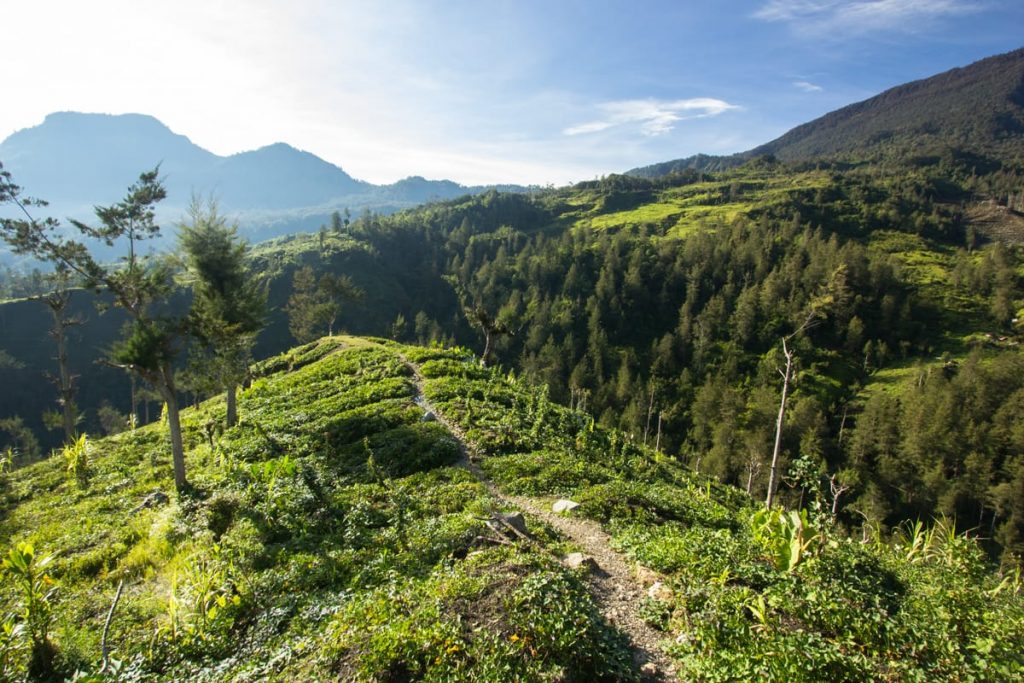
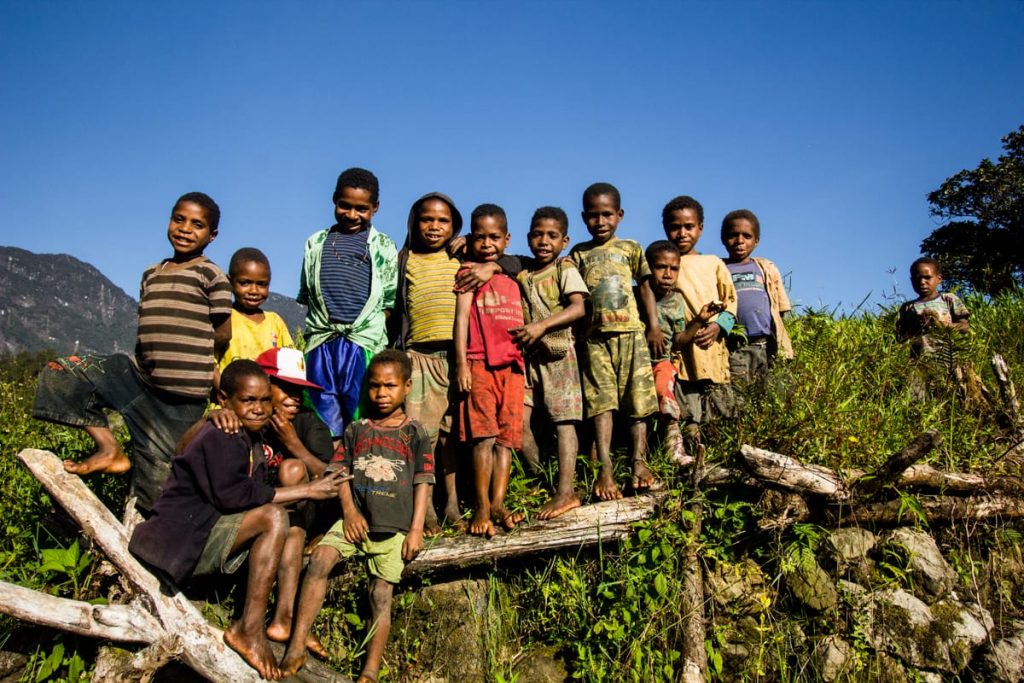
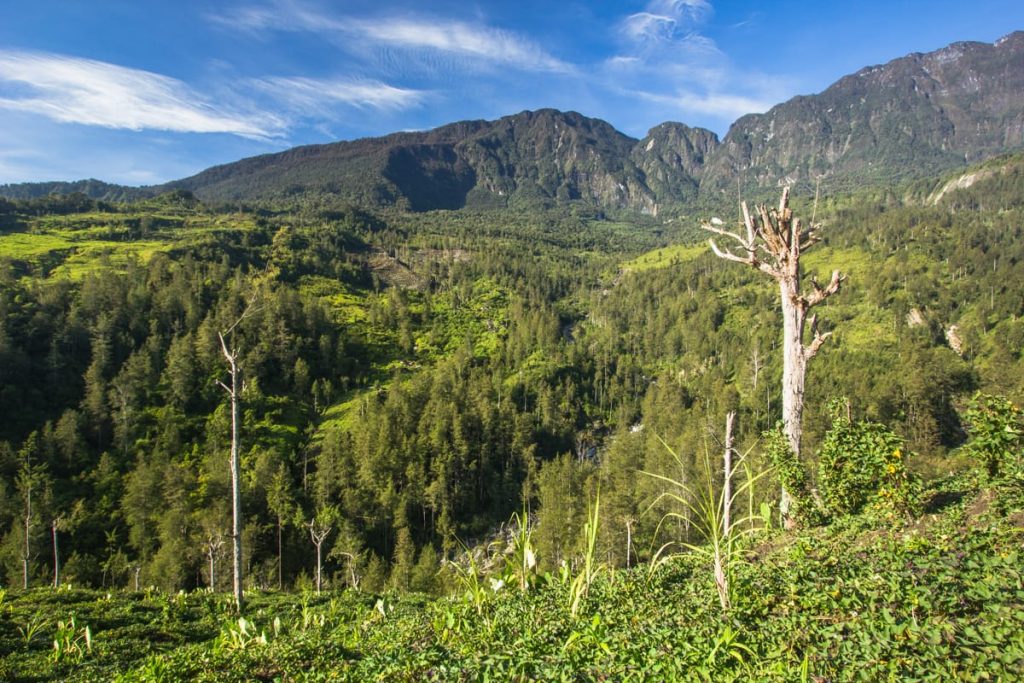
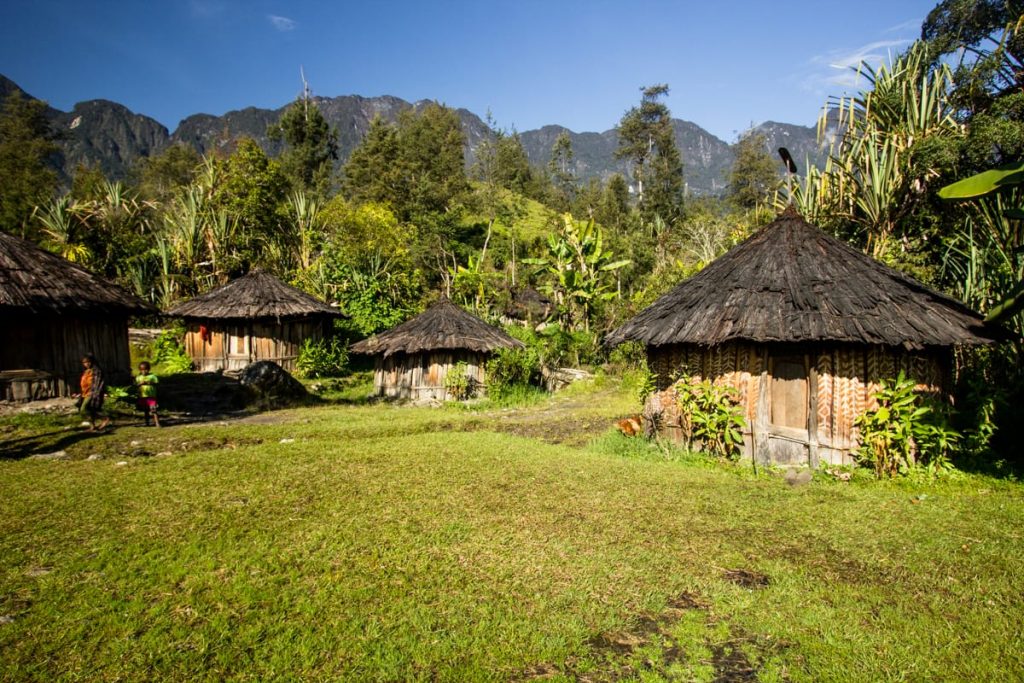
Honai used for ceremony on the right 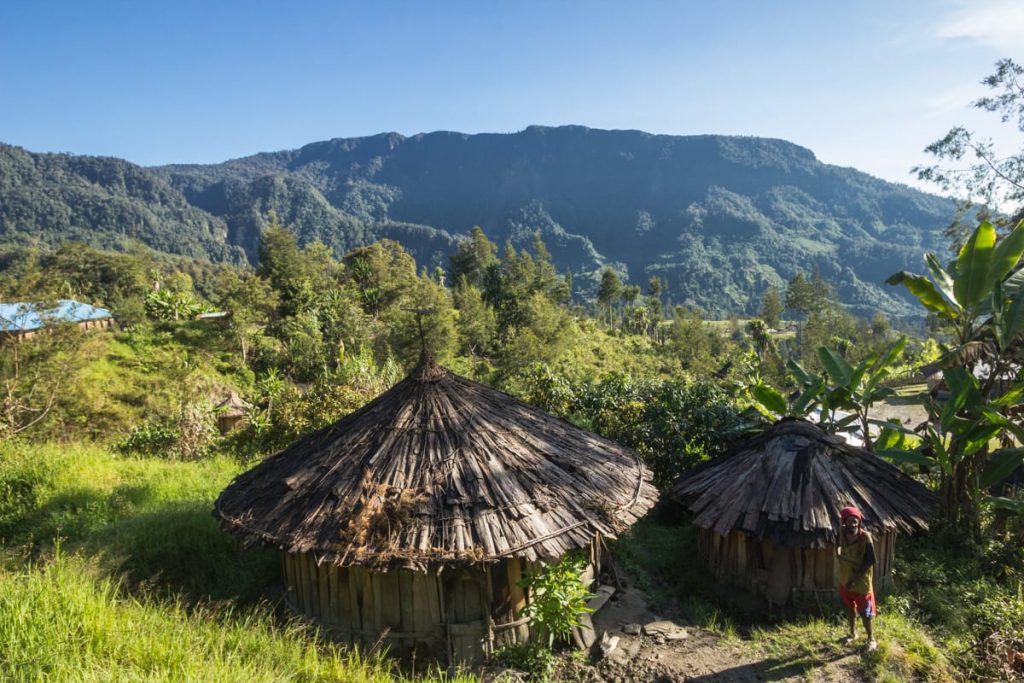
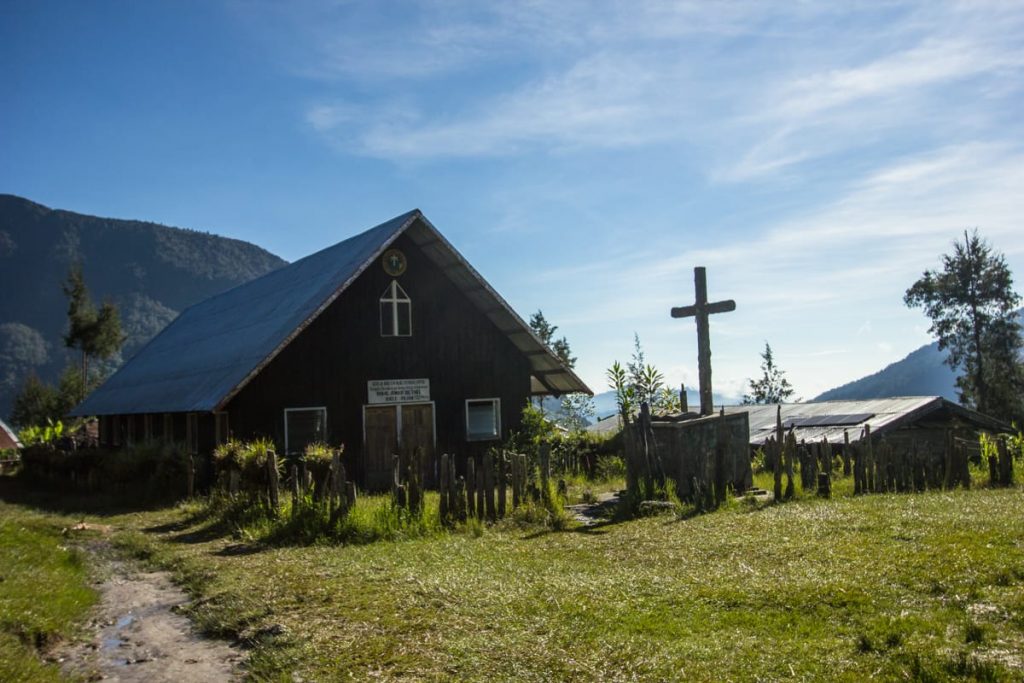
Like every village, Peliam has a church 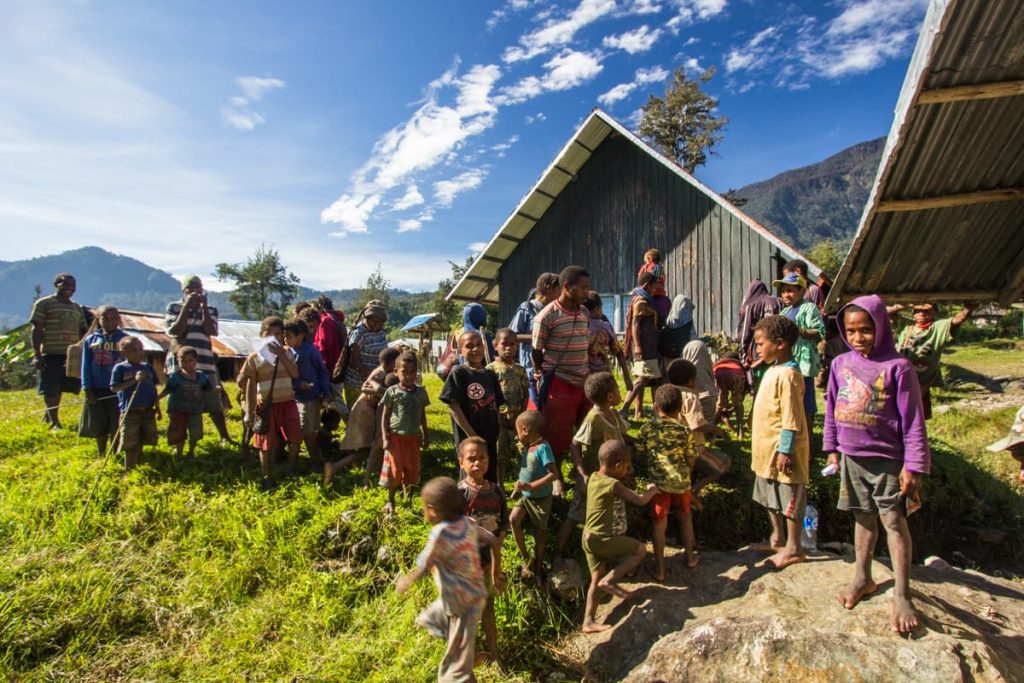
Kids running away when I pull out the camera out of my bag 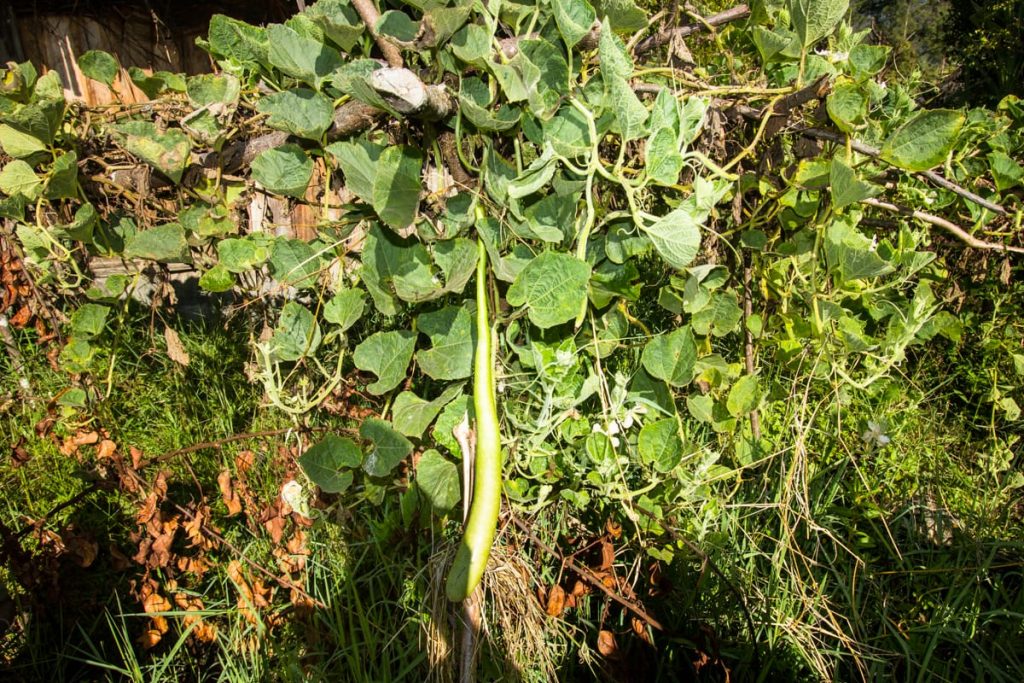
A wild koteka, that is the primary material to make a penis gourd
Boys play with slingshot. You can meet some old Papuan wandering with bow and arrow to go hunting for birds or fish. Women always carry their characteristic net bag on their head. Sometimes it’s filled with ubi leaves, sometimes with wood for fire, sometimes with a baby or even a small pig !
There is no light at night but a few flashlights. People gather in smoky honai to discuss and sometimes to sing.
Of course no medical care is available. They still deliver the baby at home by themselves. If you break your leg, you tie it to a piece of wood and wait for the pain to stop.
In Peliam they told me the villagers were entitled to cash benefits from the governement. About 10 or 20,000Rp but you would have to be in Wamena to get it. In almost every villages you can see some buildings funded by the government (it’s written on it).
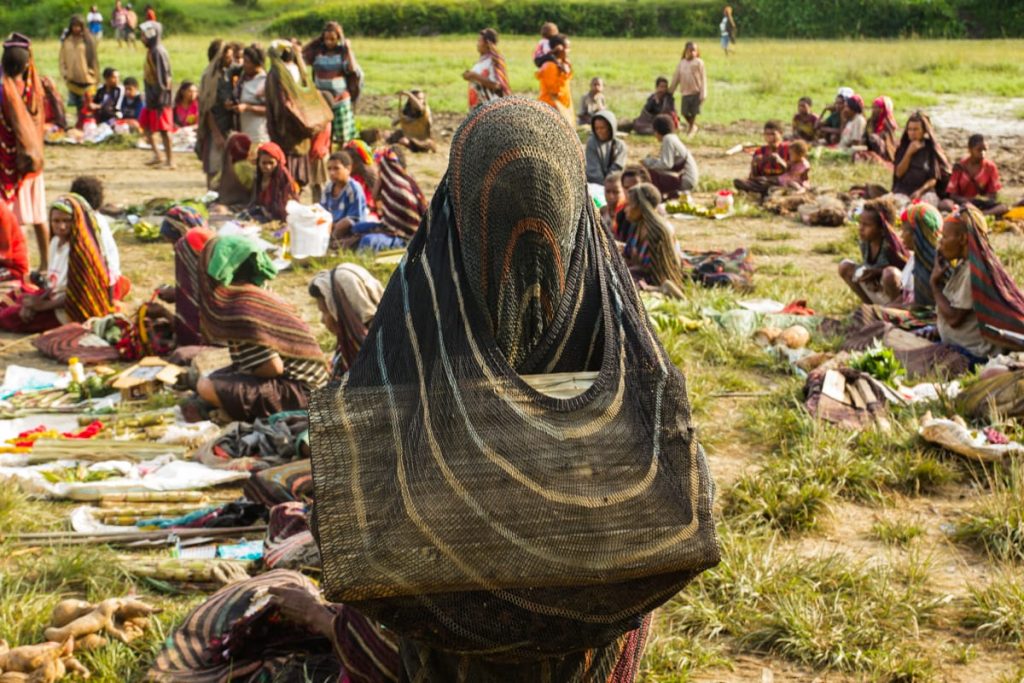
You might wonder what is the purpose of this square thing ? 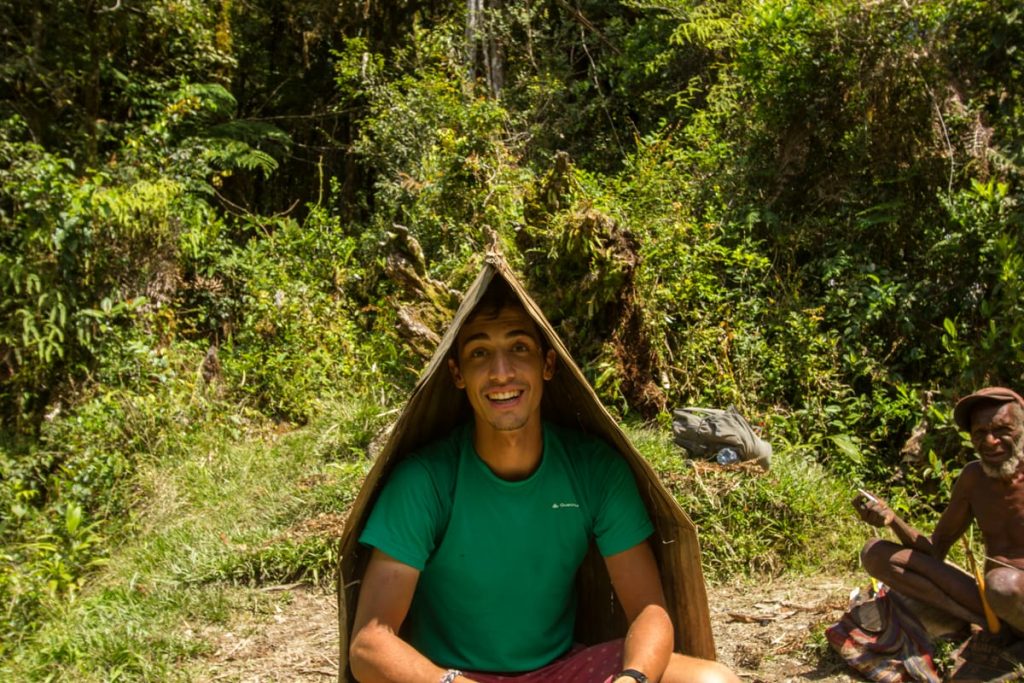
It’s actually a rain cover made out of palm leaves. Only women use it from what I’ve seen
We left a bit late this day (8h45) because I got told we would need only 4 hours to go to Angguruk. For a youngPapuan maybe, but for us it was closer to 8 hours.
The trail passes through fields for the first 45 minutes and then enters the forest. We reached the first village around 13h30.
Papuan’s character is definetly very different from Indonesian’s. After 4 days together, my guide complained in a very shy manner that I was giving out cigarette to everyone but him. On the first day I bought him 2 packs of raw tobacco on his request and I thought he preferred that to industrial cigarettes. Turned out he was just too shy to ask.
Giving and sharing seems very important for them. Yahuda would always roll and give a cigarette to anyone we would meet on the trail. It also happens a couple of time that we gave a few ubi or were given ubi without anything in return by someone met on the trail
Approaching Angguruk, I could realize that we had entered another valley. A nice area with cultivated gardens everywhere. This is the territory of the Yali
From the first village after the forest, it took us another 3 hours to eventually arrive in Angguruk.
In Angguruk, it’s possible to stay at a house formerly used by the missionaries. It sounds like a 5 stars hotel: rooms, beds, mattress and even blankets.
Angguruk is one of the largest village of the Yalino.
Walking time : 7h45
Accommodation : 100’000Rp
Food : 55’000Rp (bought in the local shop).
Day 7 : from Angguruk to Wamena
Based on the advices of East-Indonesia, I wanted to see Angguruk’s market. It’s held every Friday and Monday.
Lucky for me I arrived in Angguruk on a Thursday. People come from different villages nearby to sell stuff. It’s the only place where I saw women dressed with grass skirt. There was maybe 100 or 150 people attending.
Recently I came across those exceptional pictures from 1994. At the end of the article you’ll find some pictures taken at the exact same place than right below, but 23 years earlier ; what a change.
People sell fruits and vegetables (bananas, passion fruit, shallot, chilli …), tobacco leaves, thread to weave nokem, grass skirt but also rice, cigarettes, lighters, shampoo …
The latter item are a bit surprising especially knowing that Angguruk has one of the busiest airstrip of the region. So how the resellers can make money (I mean everyone can already buy supplies from the shops in the village who get their supply from Wamena by plane) ? Simple, they buy in Wamena and bring everything back by walking (even 40kg bags of rice).
Retrospectively I think I should have stayed longer just to explore the surrounding villages or walk to Kosarek. I could maybe have waited Sunday and have the chance to see a communal feast.
But back then, my mood was more like :
– My sneakers (definetely not recommended) are wet, full of mud and my feet are ruined after 3 days walking in the water.
– I’m tired of sleeping on the floor (even though it wasn’t the case in Angguruk).
– For sure there is a plane leaving today, the next one might be on Monday (so 3 days later).
So I decided to take the plane instead of taking the risk to be stuck for a long time in Angguruk.
According to the airstrip “office” (more exactly, a shack) there is a flight everyday from Monday to Friday. Nonetheless, the AMA (the airline) office in Wamena told me otherwise. It’s not a regular flight but a charter. It’s just that cargo shipments to Angguruk are really regular.
The price is 600,000Rp. I also paid the ticket to my guide even though we had agreed before to stop in Angguruk and return to Wamena separately. I couldn’t decently take the plane alone and let him walk back for 4 days.
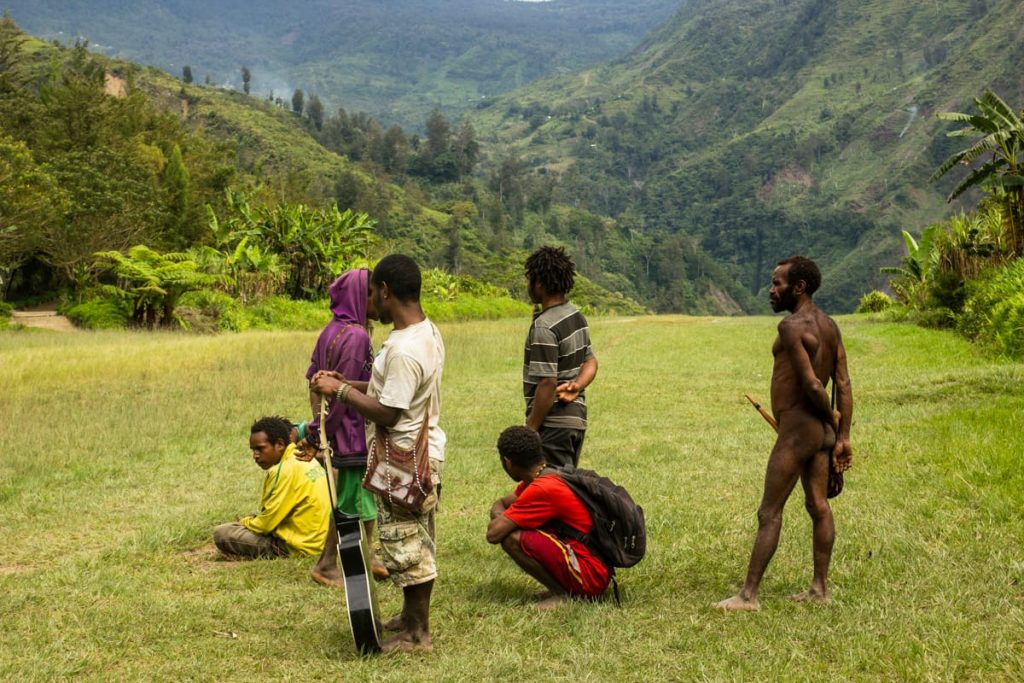
The crowd waiting 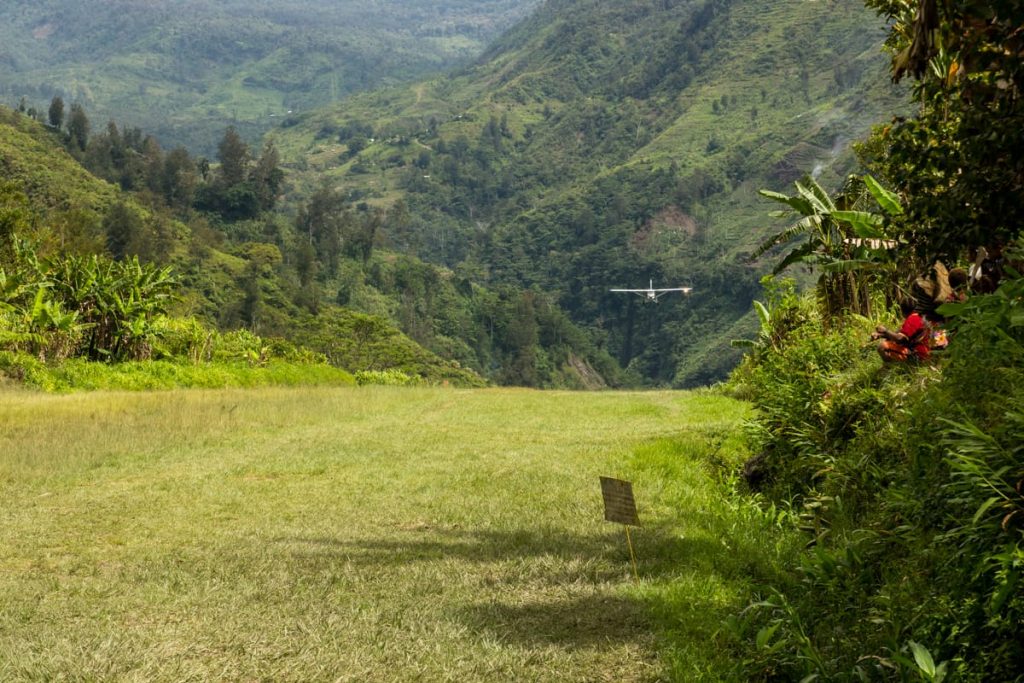
Flight incoming 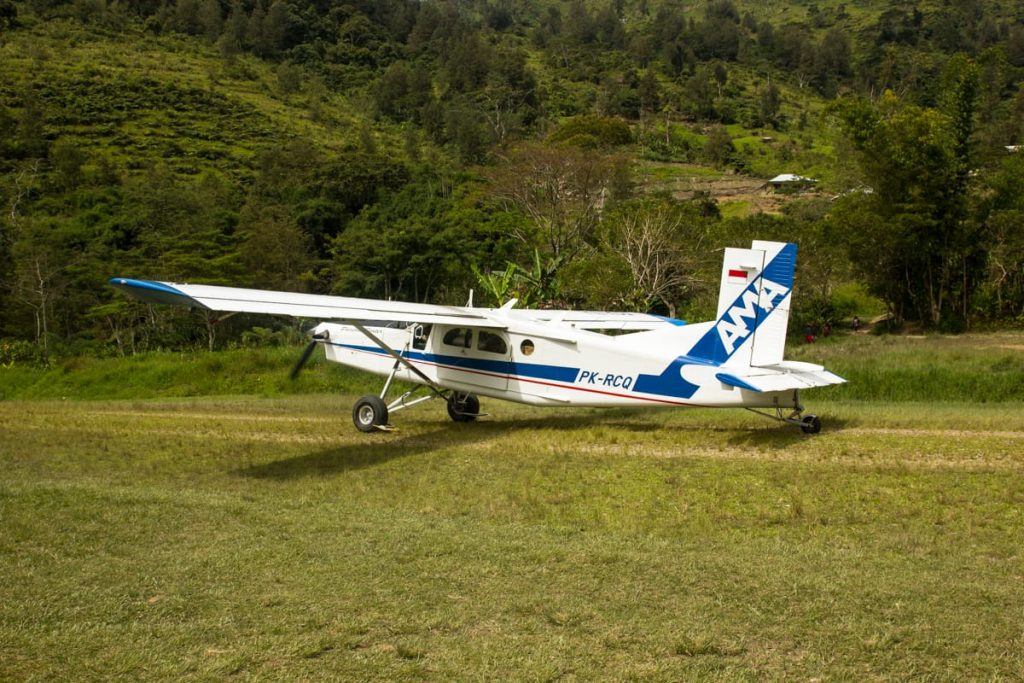
A Pilatus Porter 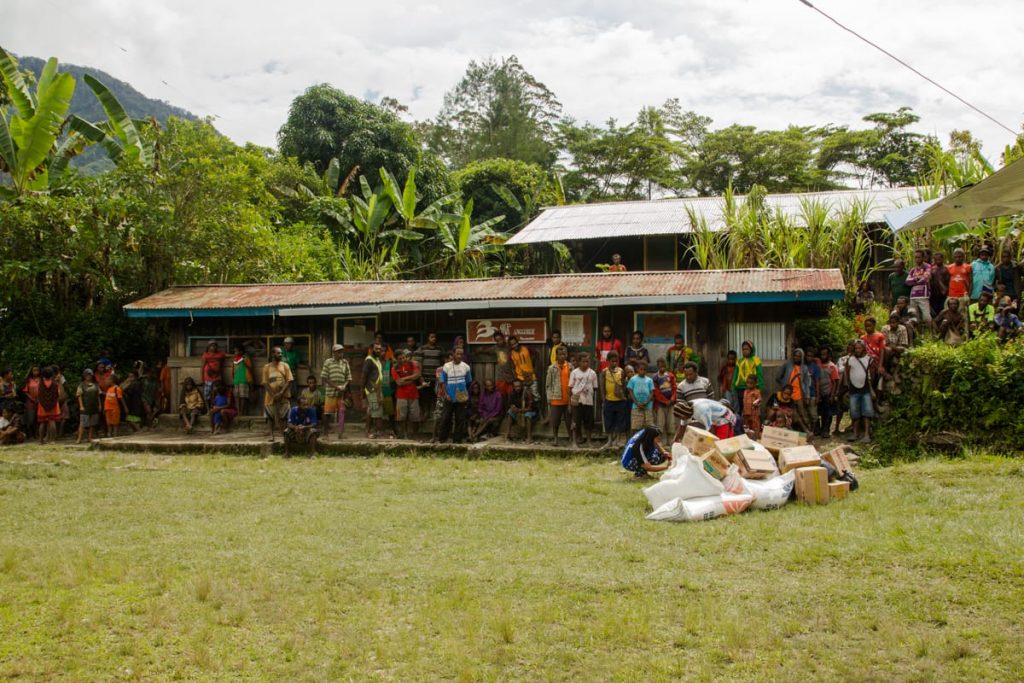
Be sure that all the village will gather to watch the plane lands 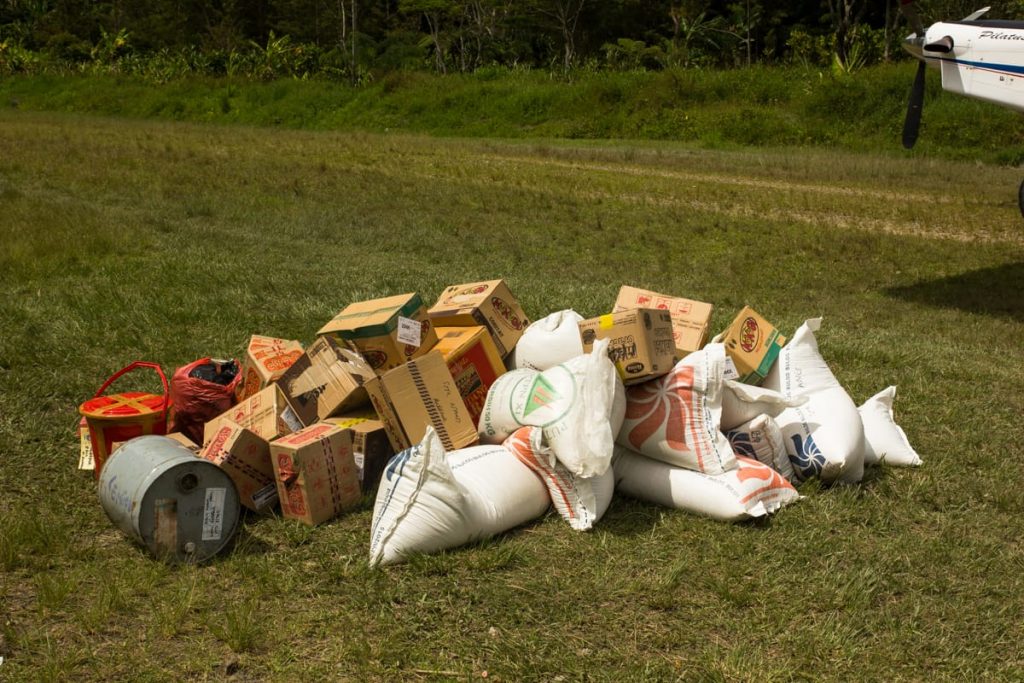
Cargo from Wamena 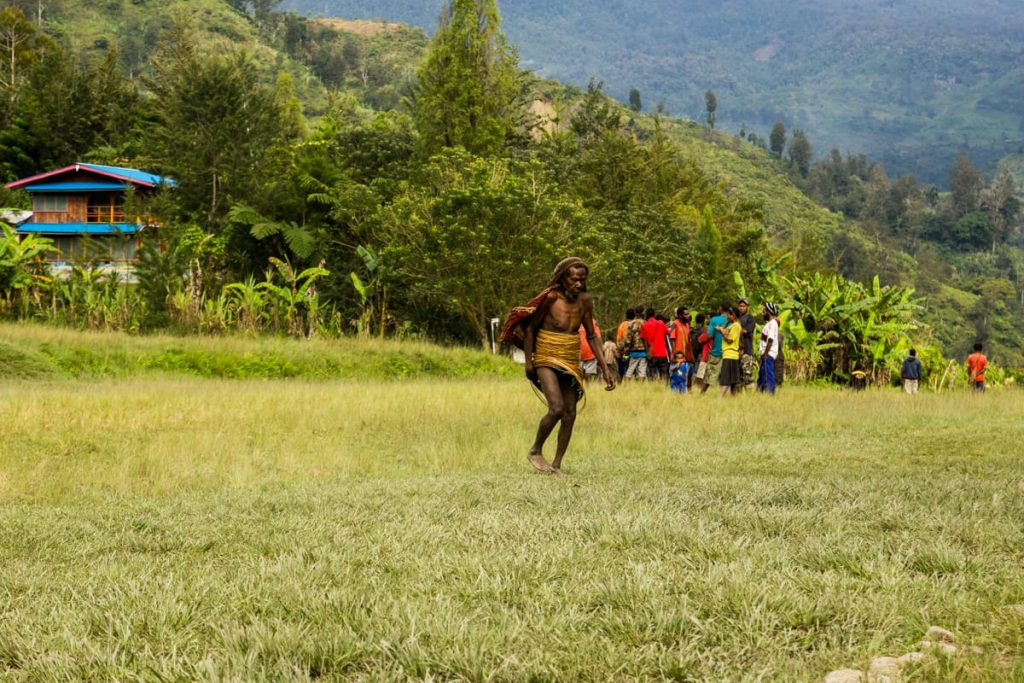
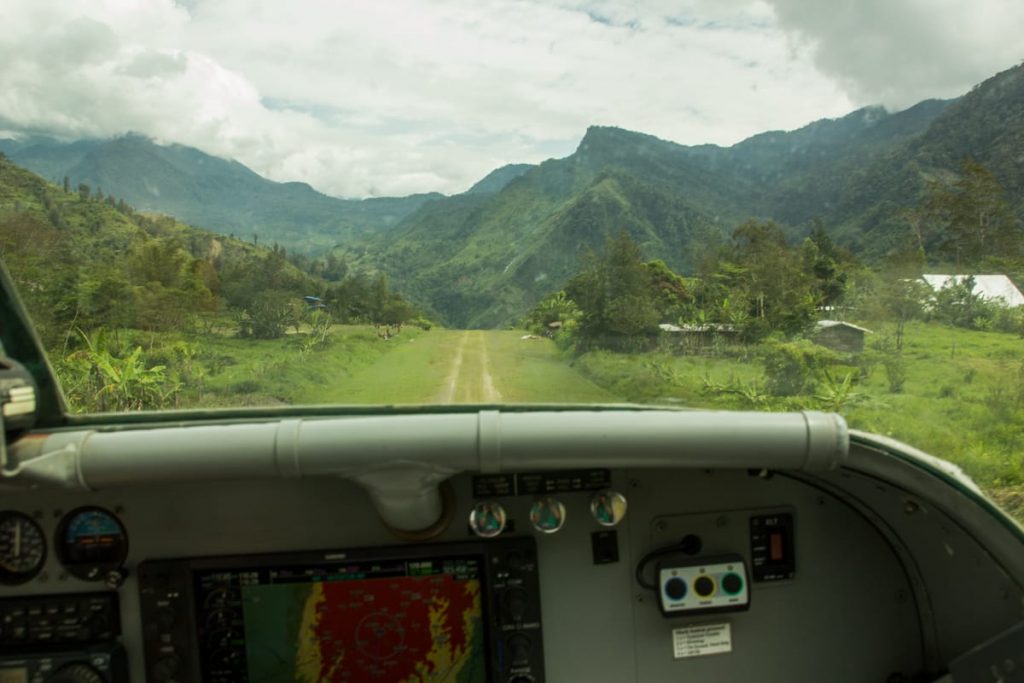
Ready for take off
All Missionaries Airlines (AMA) has unfortunately a poor safety track record. Just one week after my visit, one of their plane crashed killing all 5 passengers.
Final budget
Costs of the 7 days (excluding costs of the last night in Wamena and the meals taken in Wamena).
- Guide : 1,400,000Rp (4×200,000Rp + 600,000Rp for the plane ticket).
- Accomodation : 400,000Rp
- Food : less than 250,000Rp (I didn’t keep track of everything I bought in the shops)
- Misc : about 300,000Rp for gifts (cigarettes, lighters, balloons, pencils …)
- Transport : 70,000 from Wamena aiport to Kurima, 600,000Rp for the return plane ticket.
So about 3,000,000Rp for 7 days. Could have been less by sharing the guide with others.
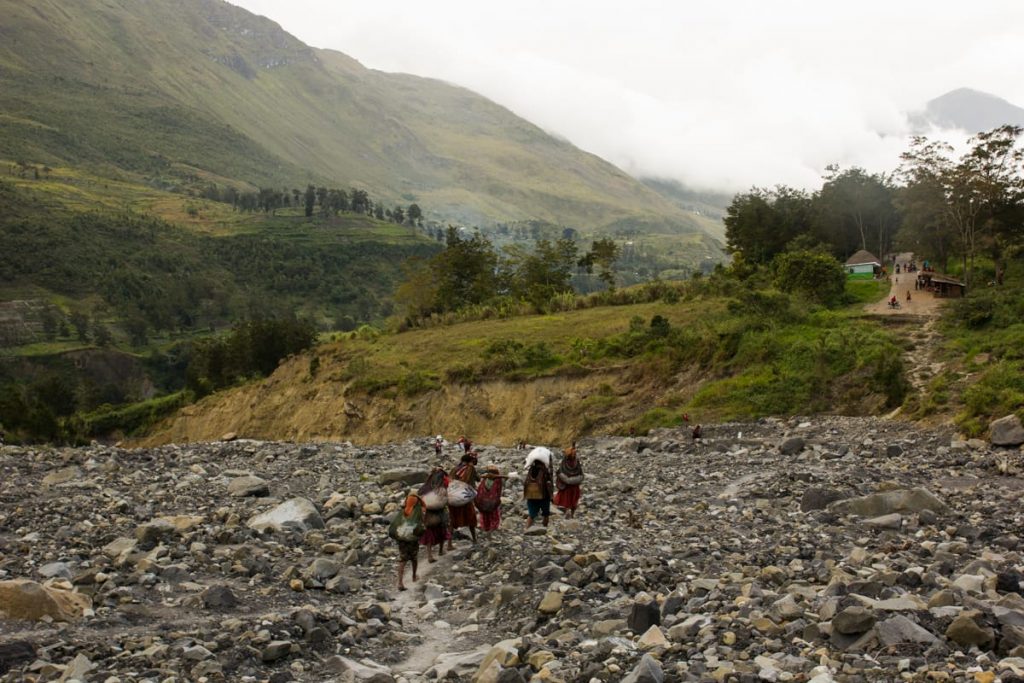
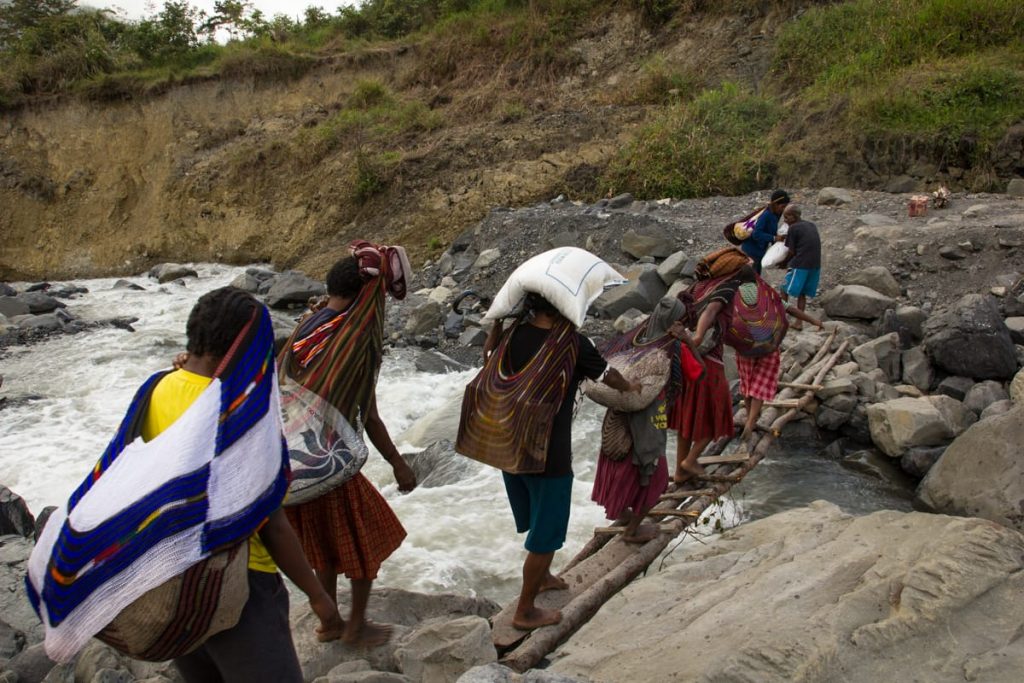
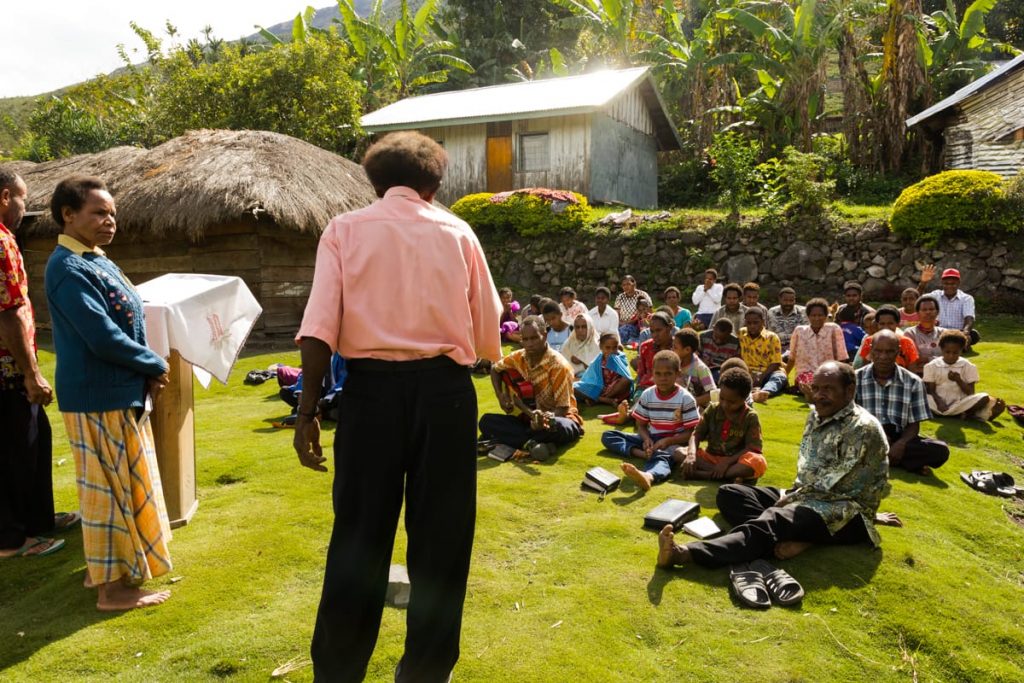
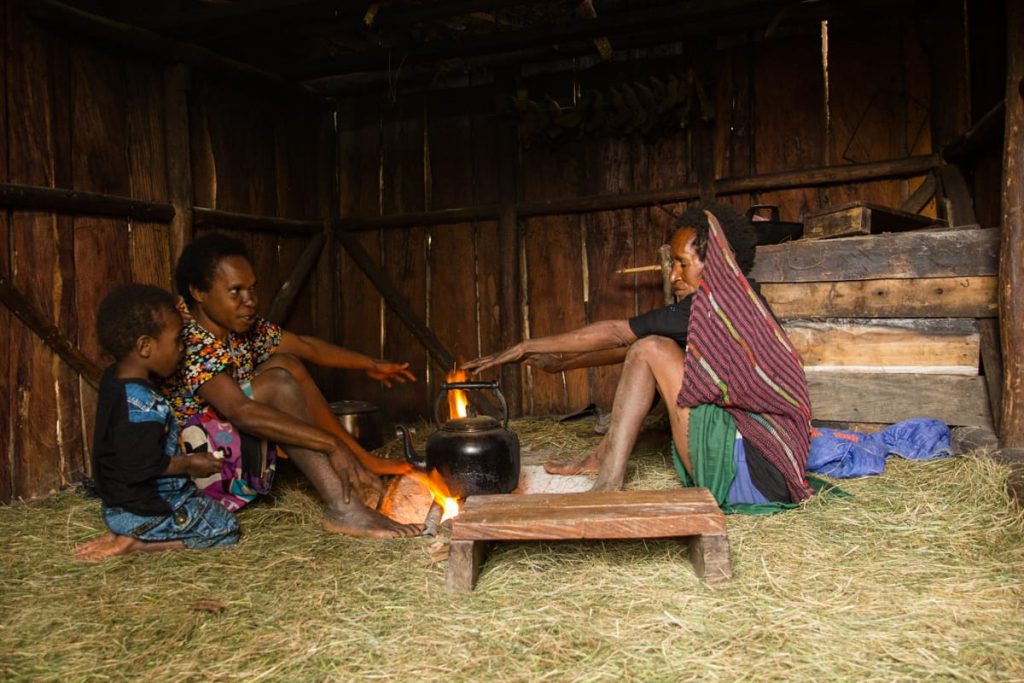
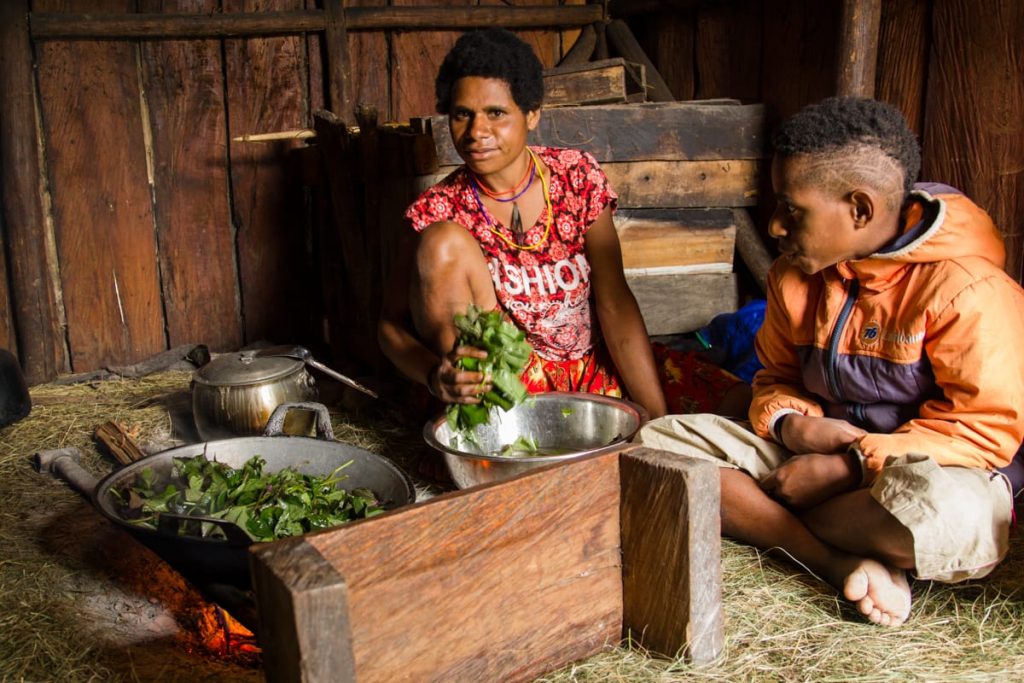
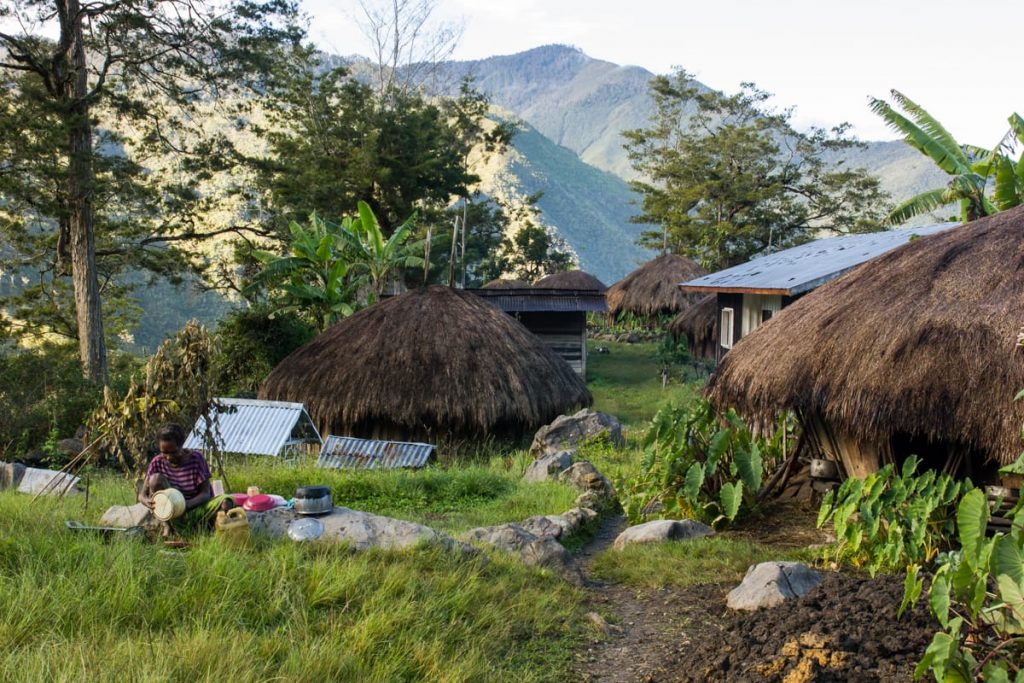
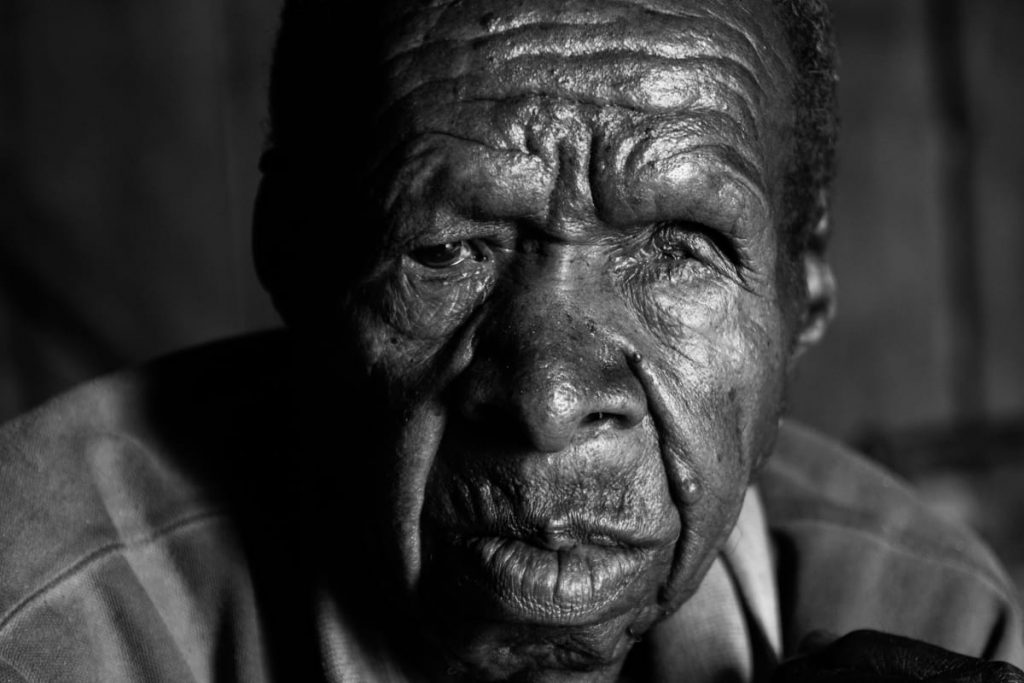
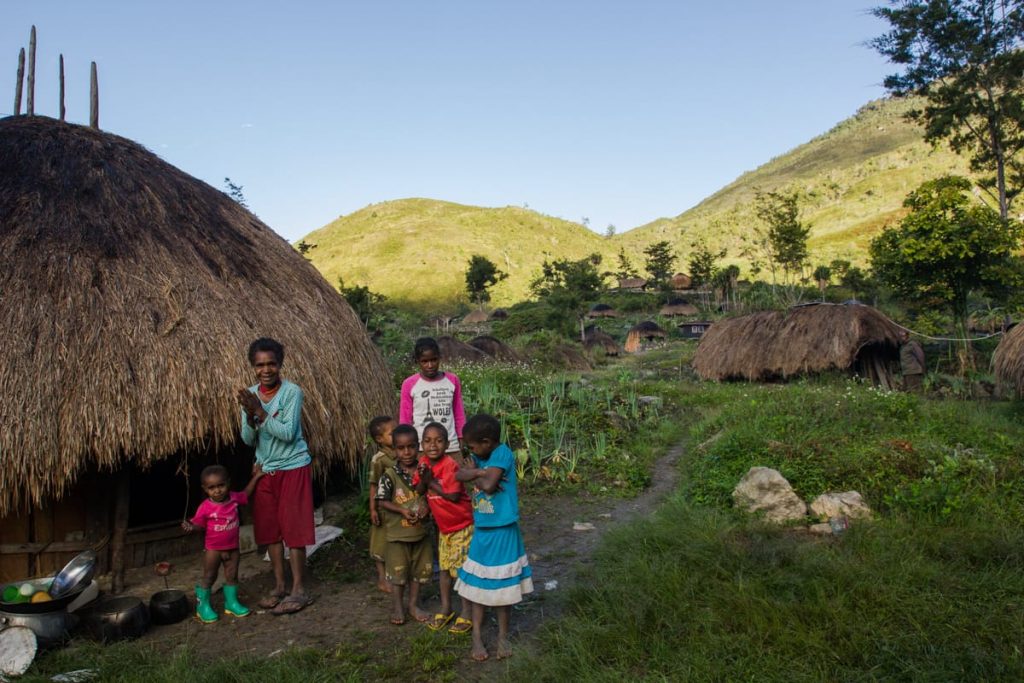

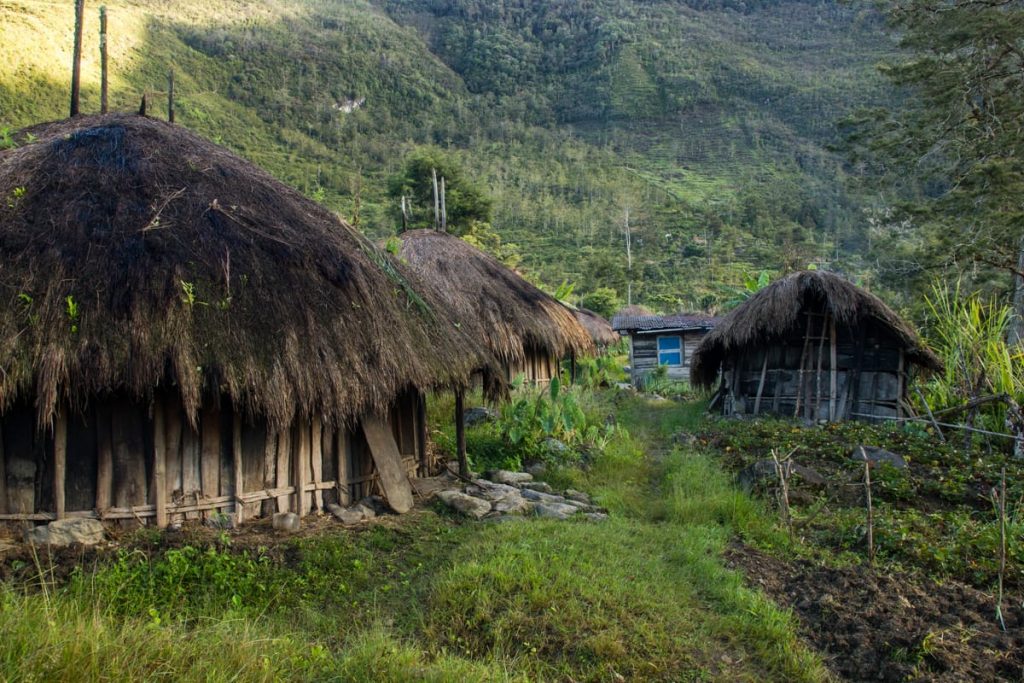
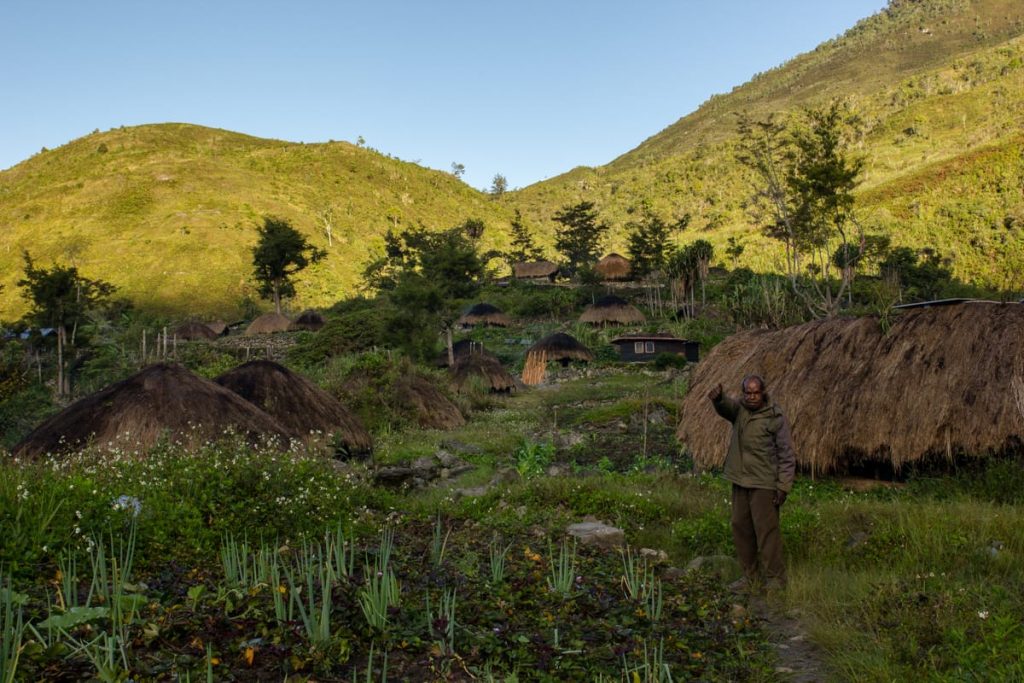
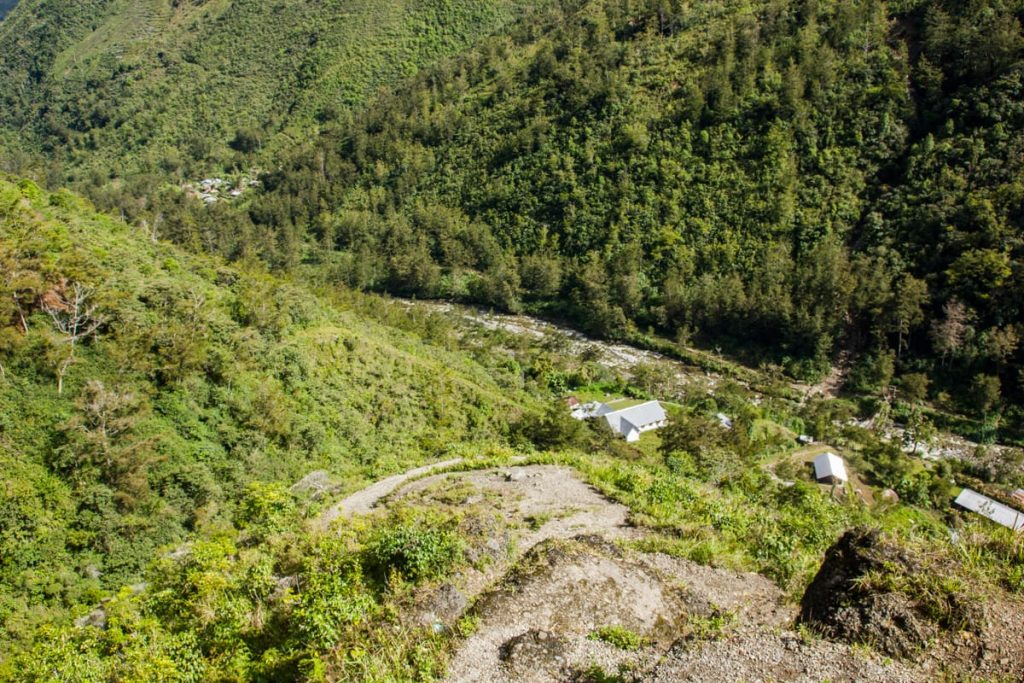
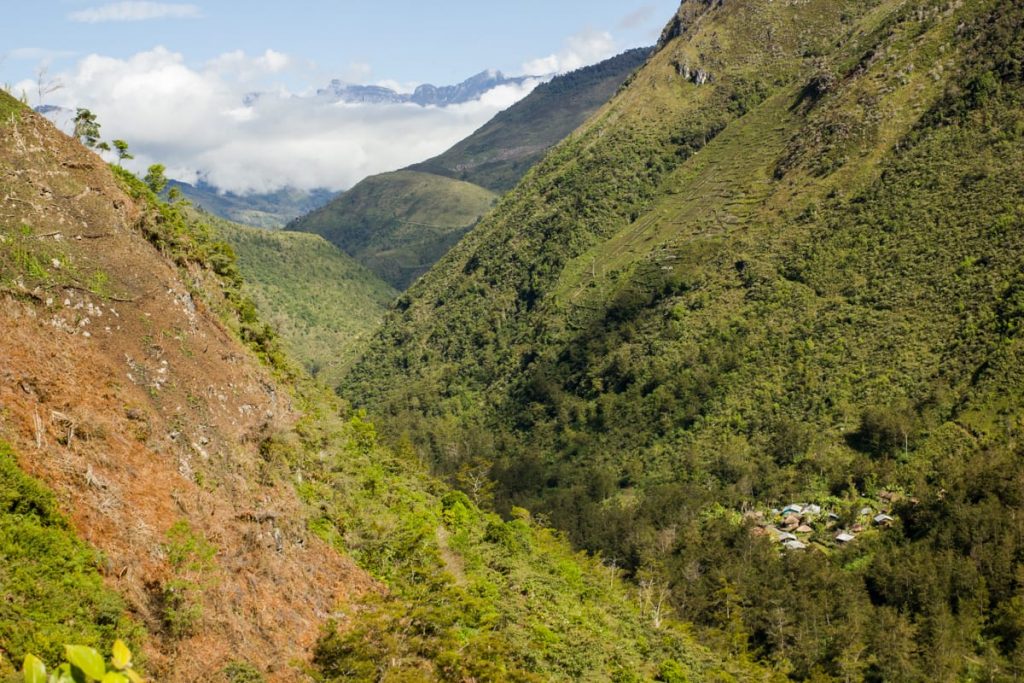
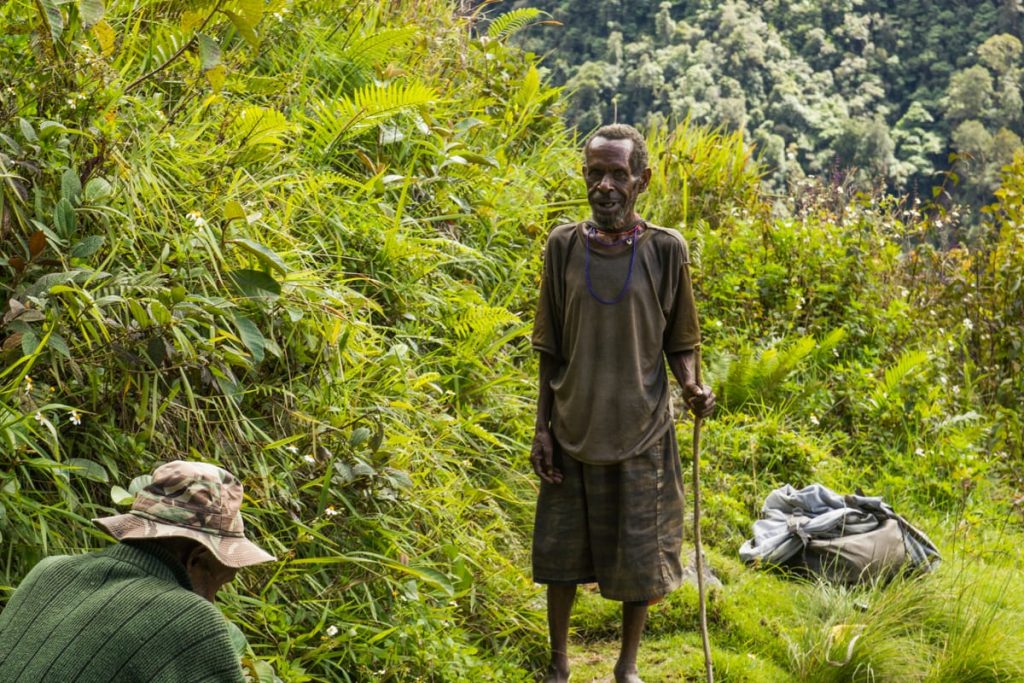
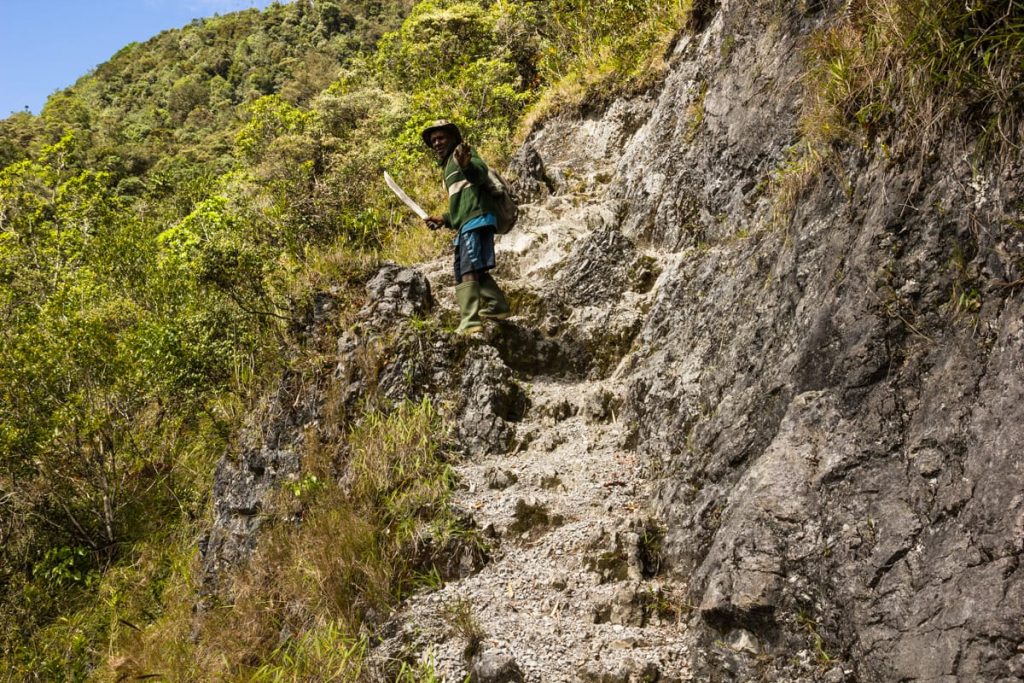

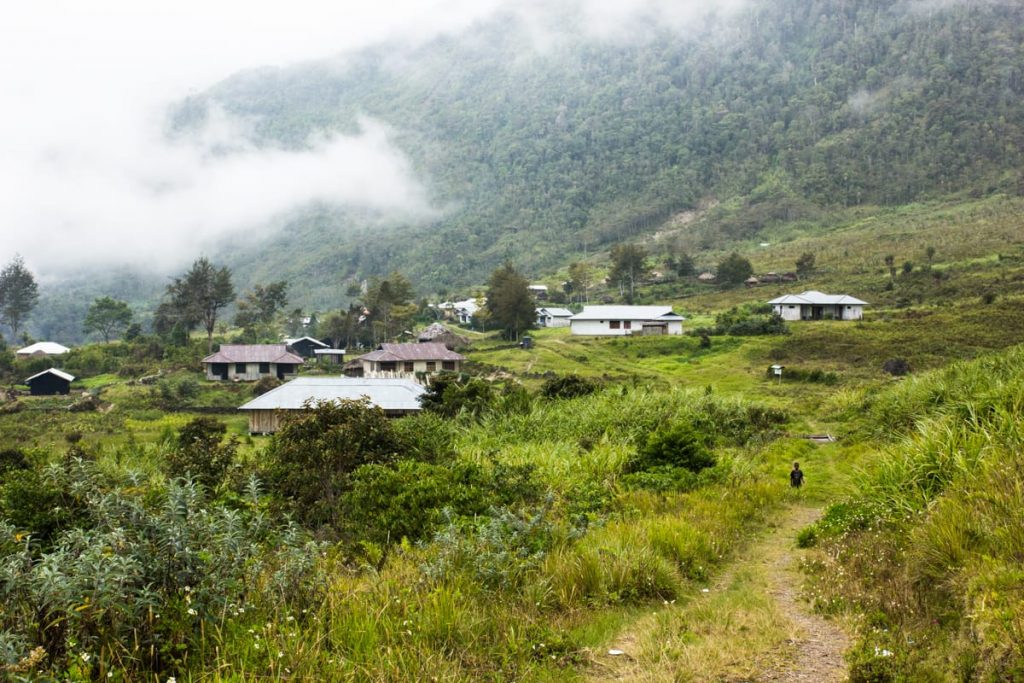
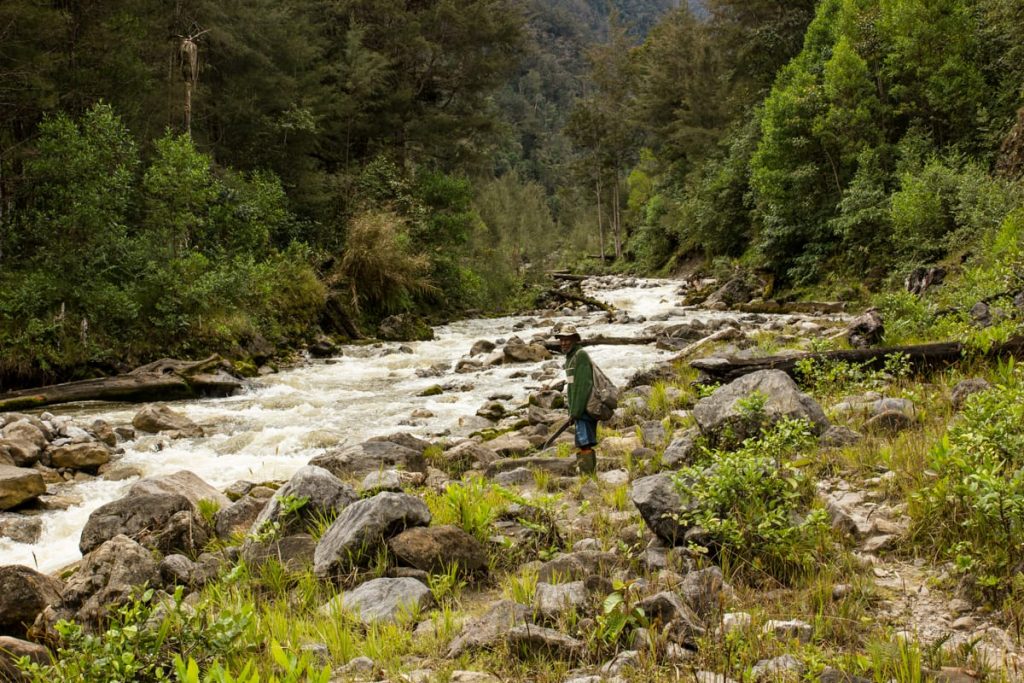
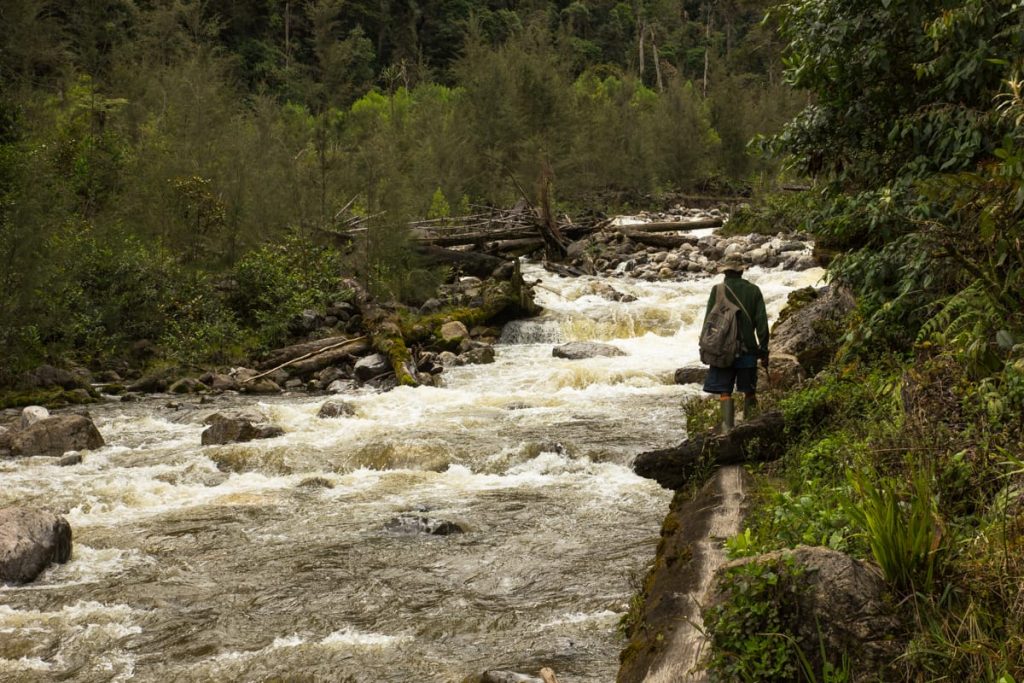

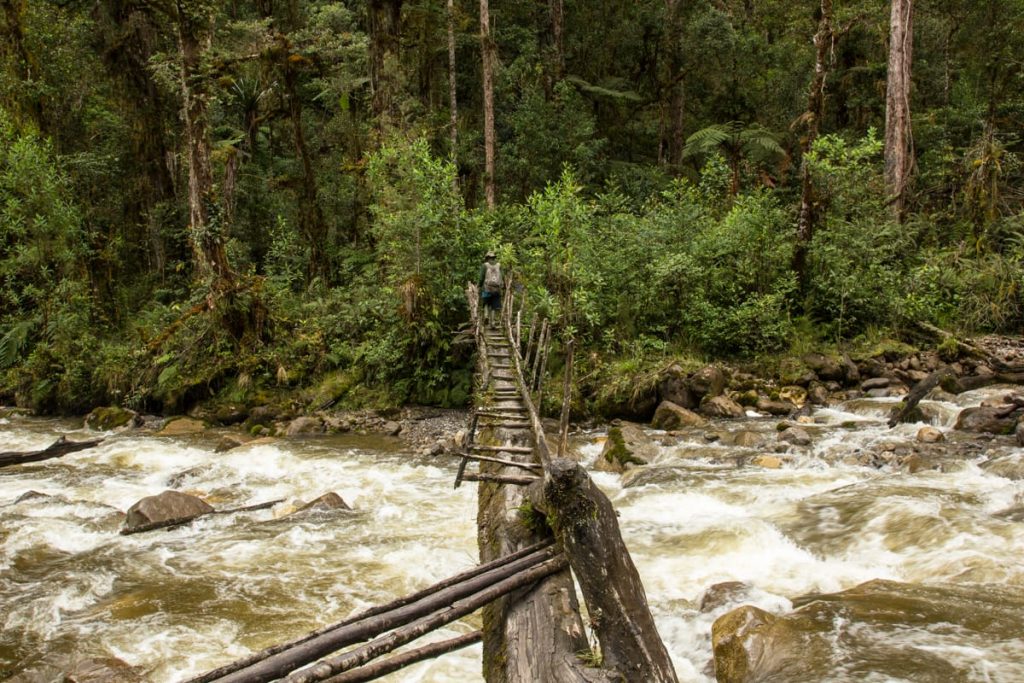
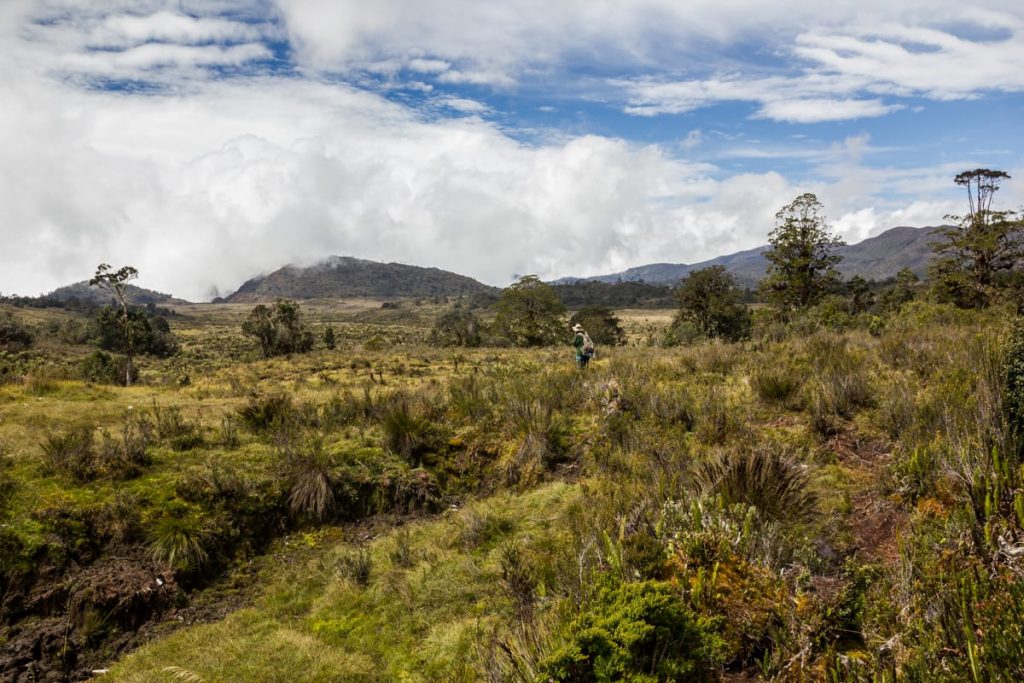
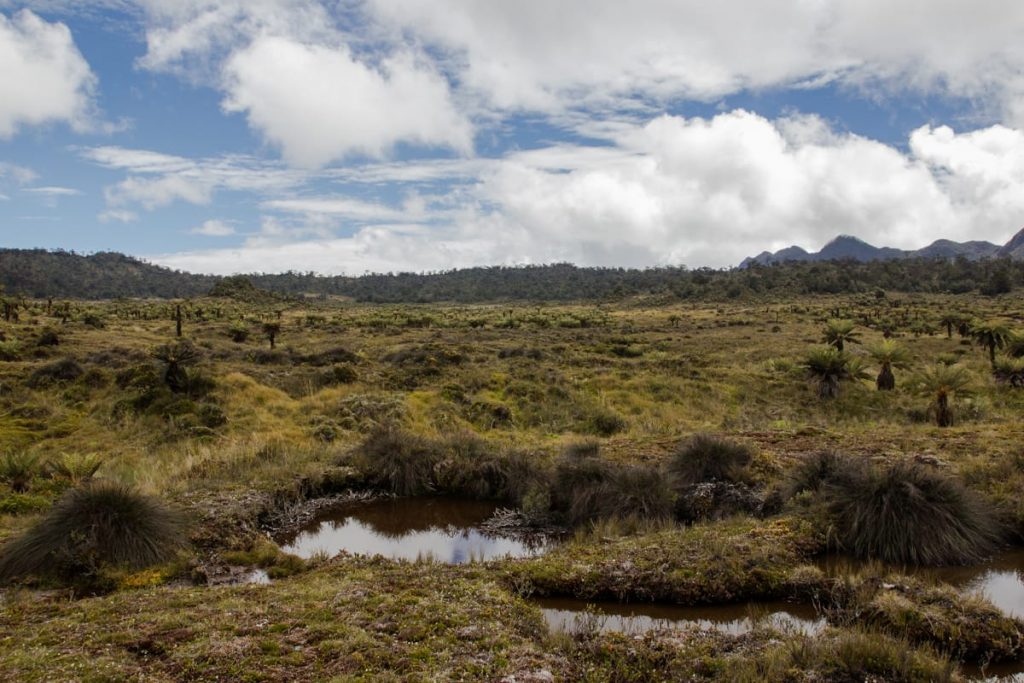
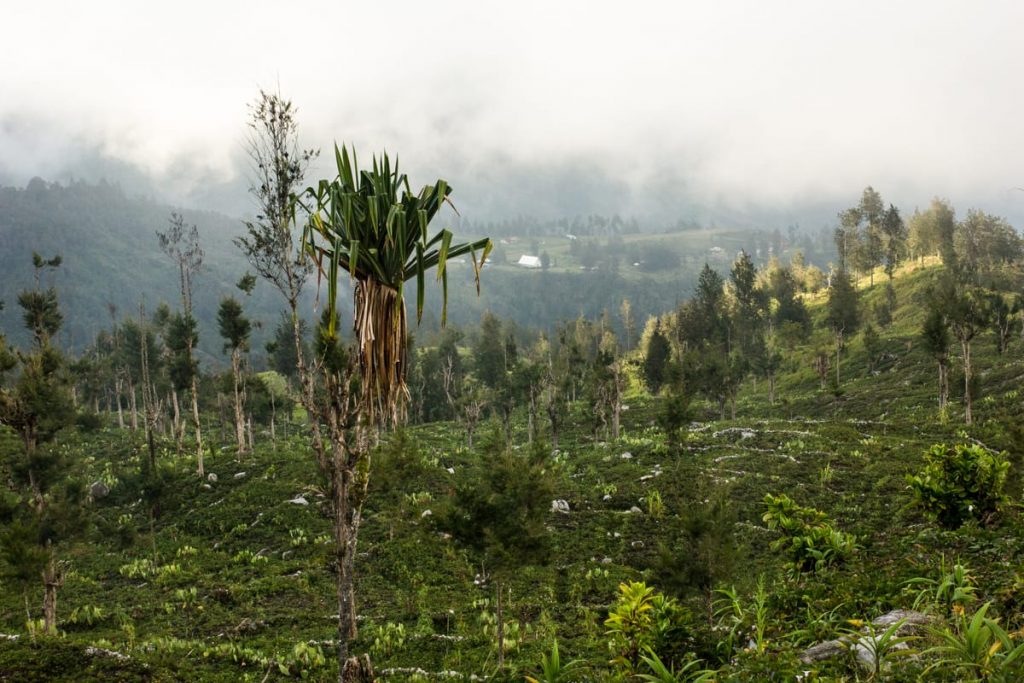
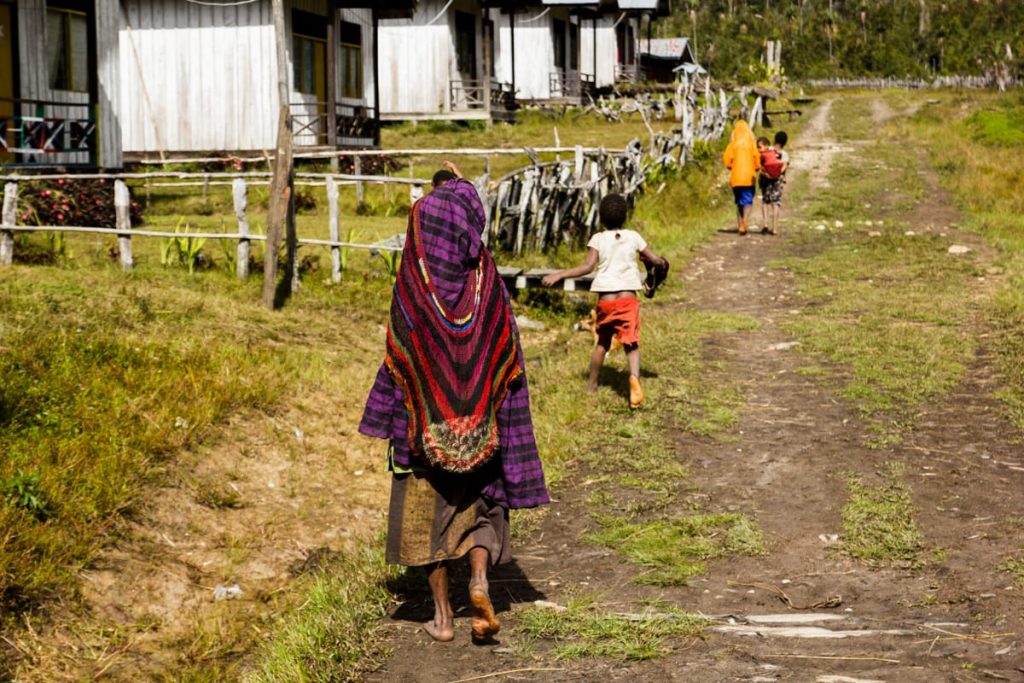
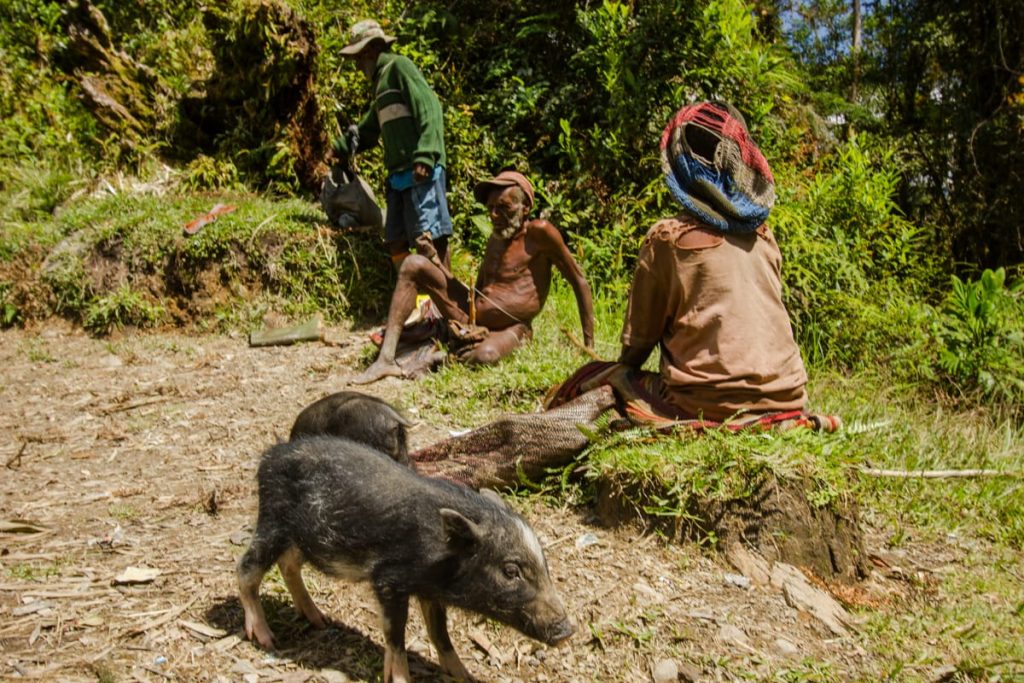
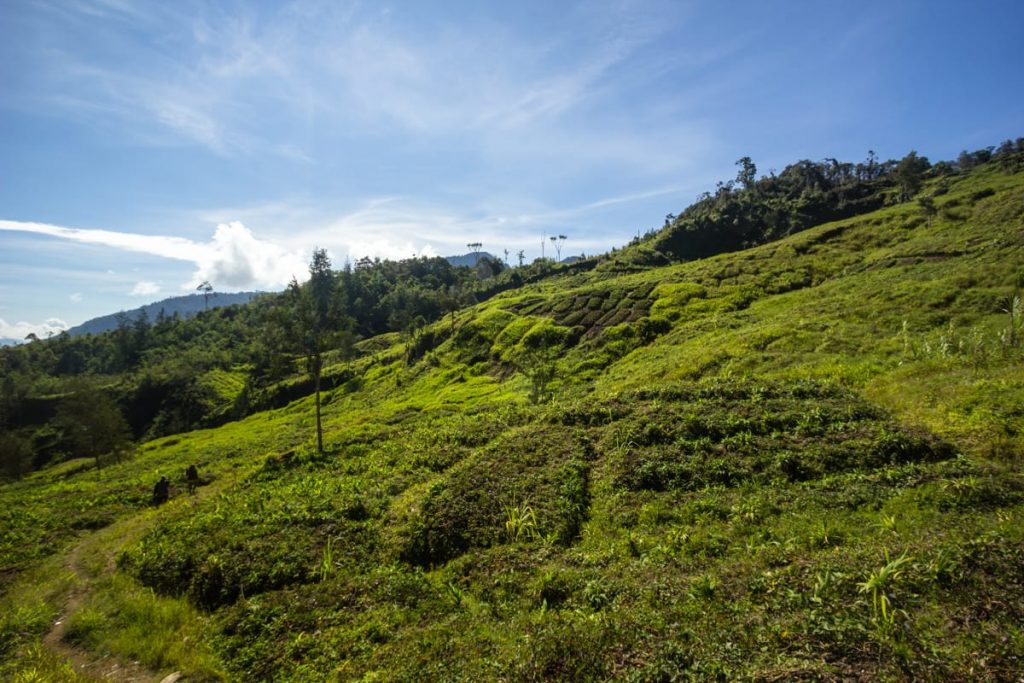
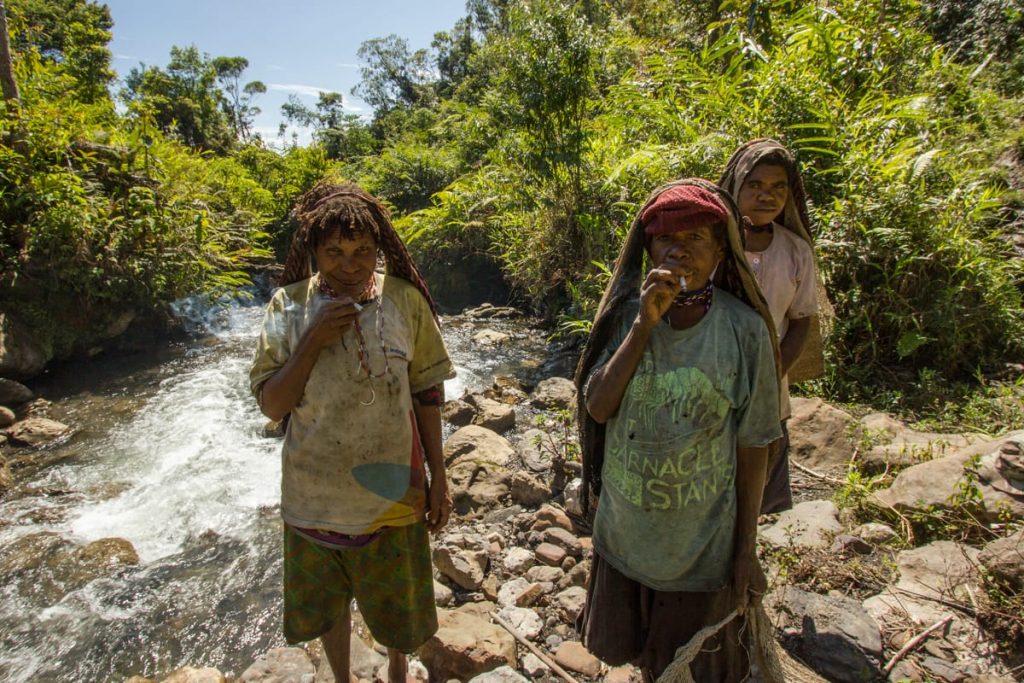
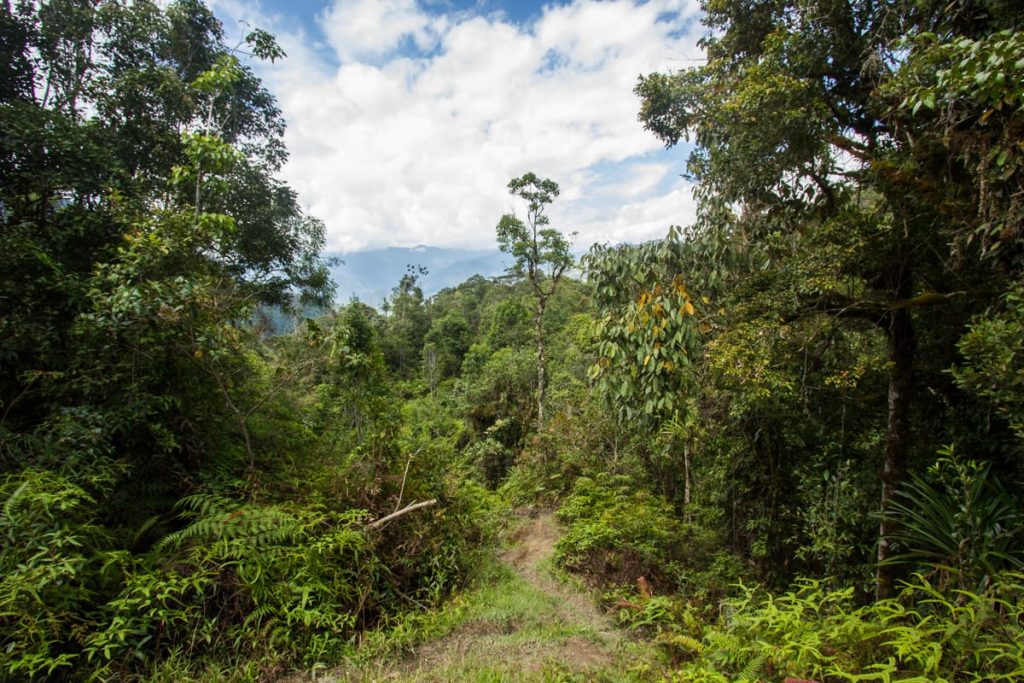
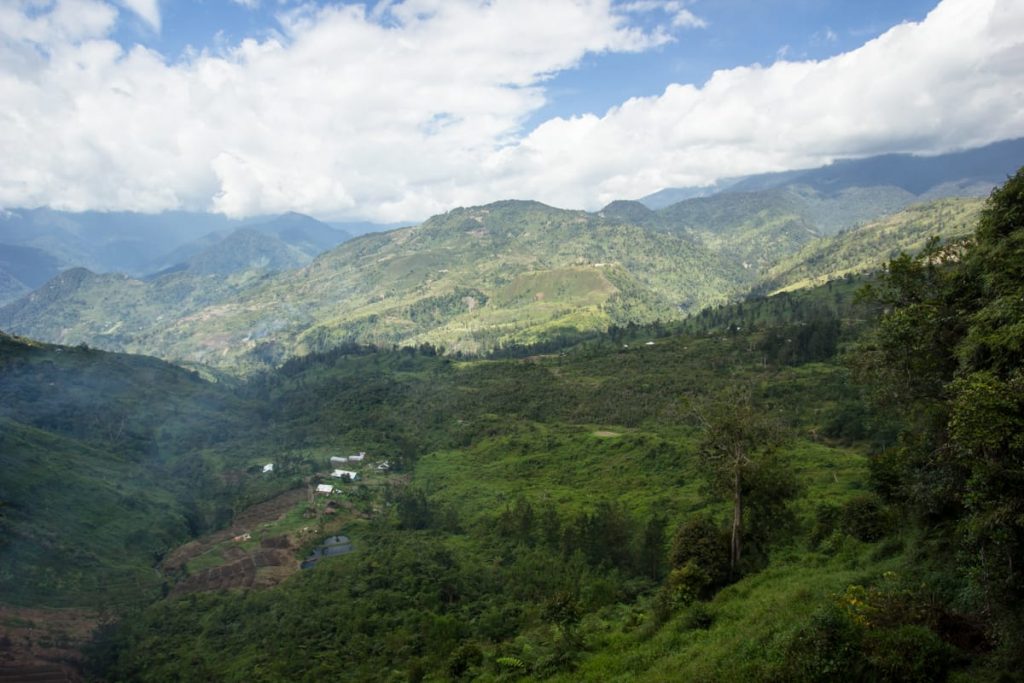
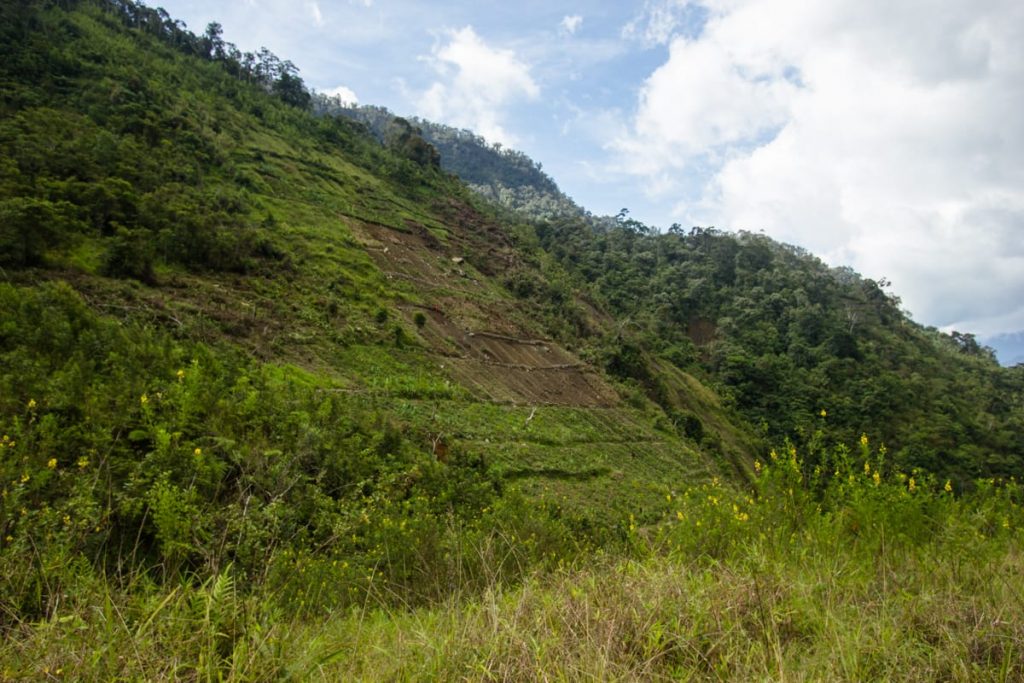
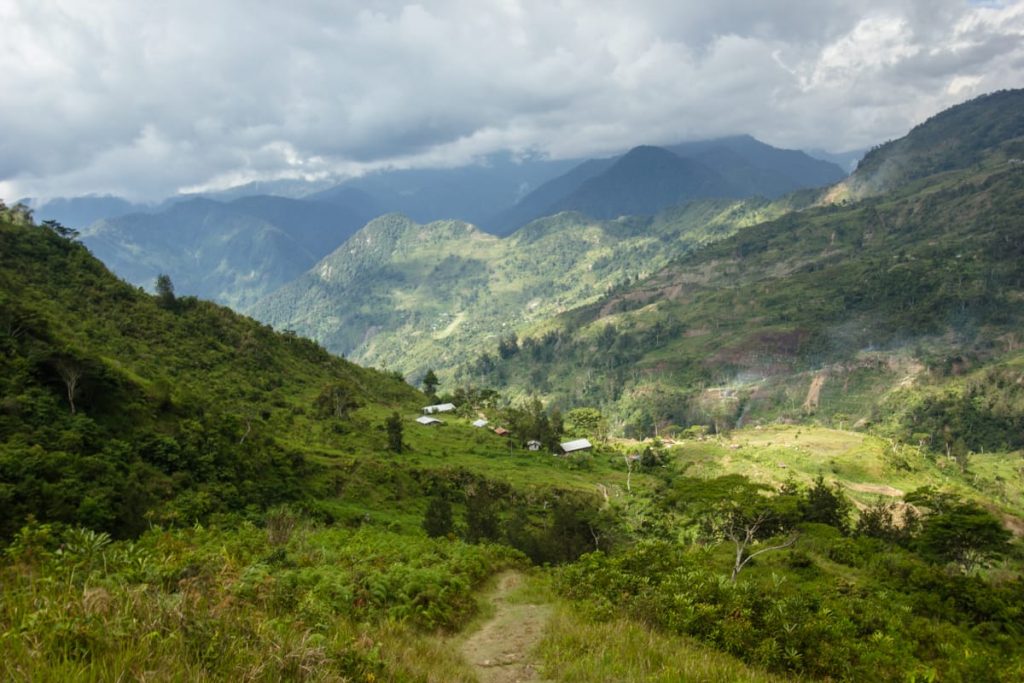
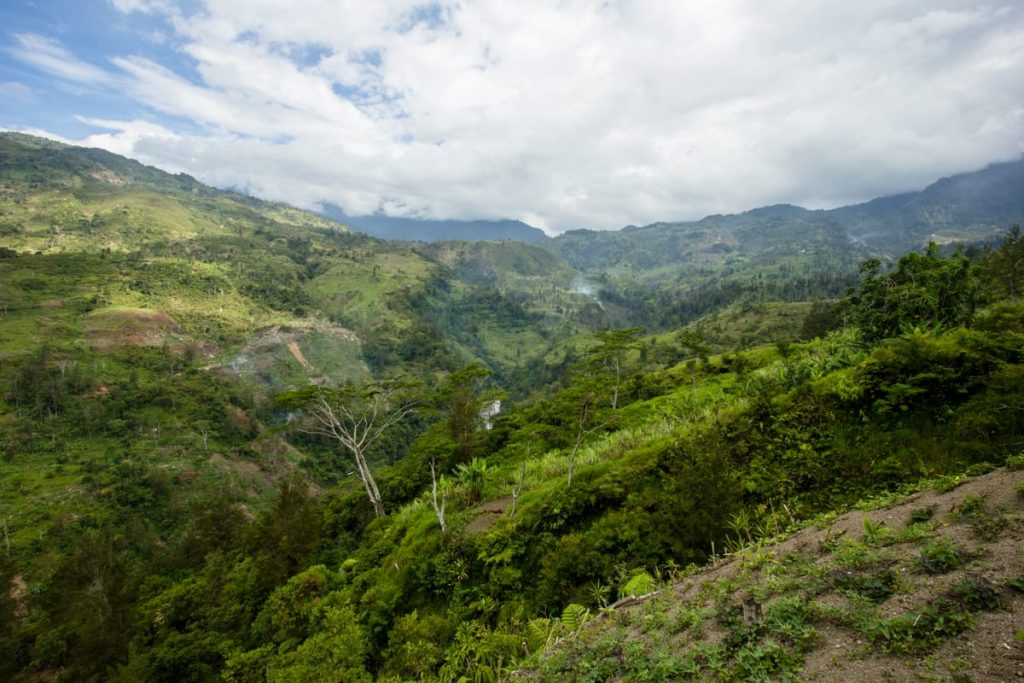
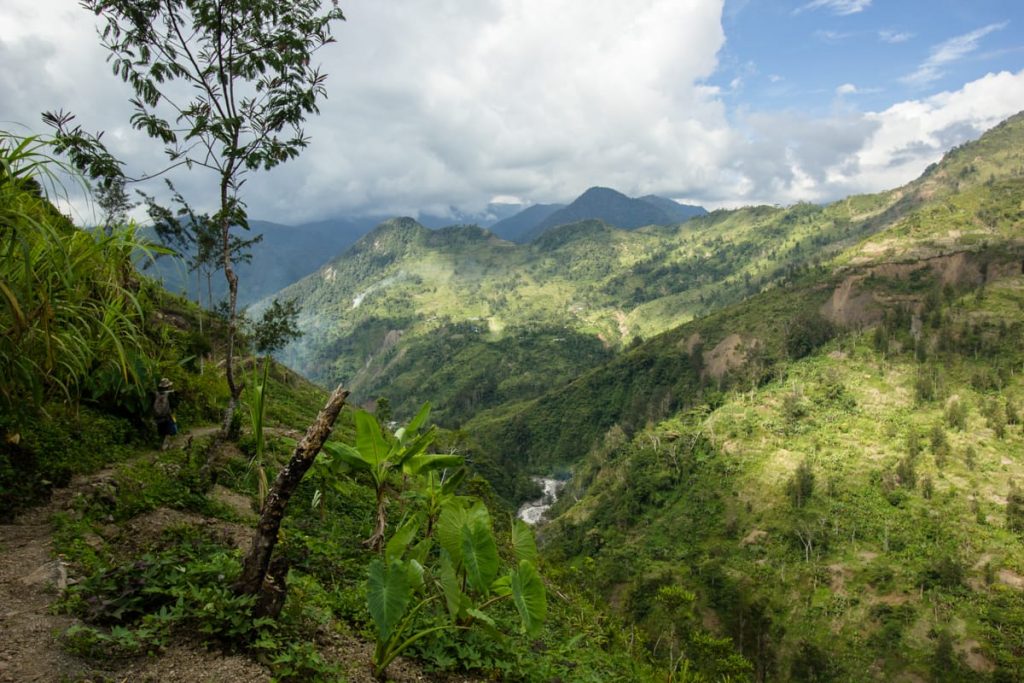
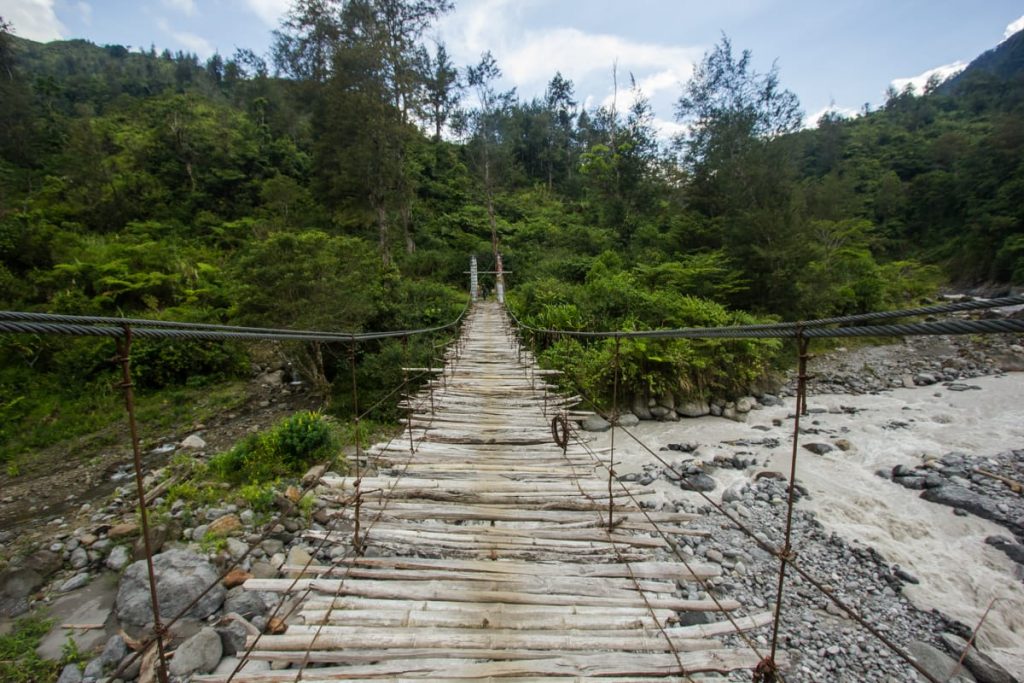
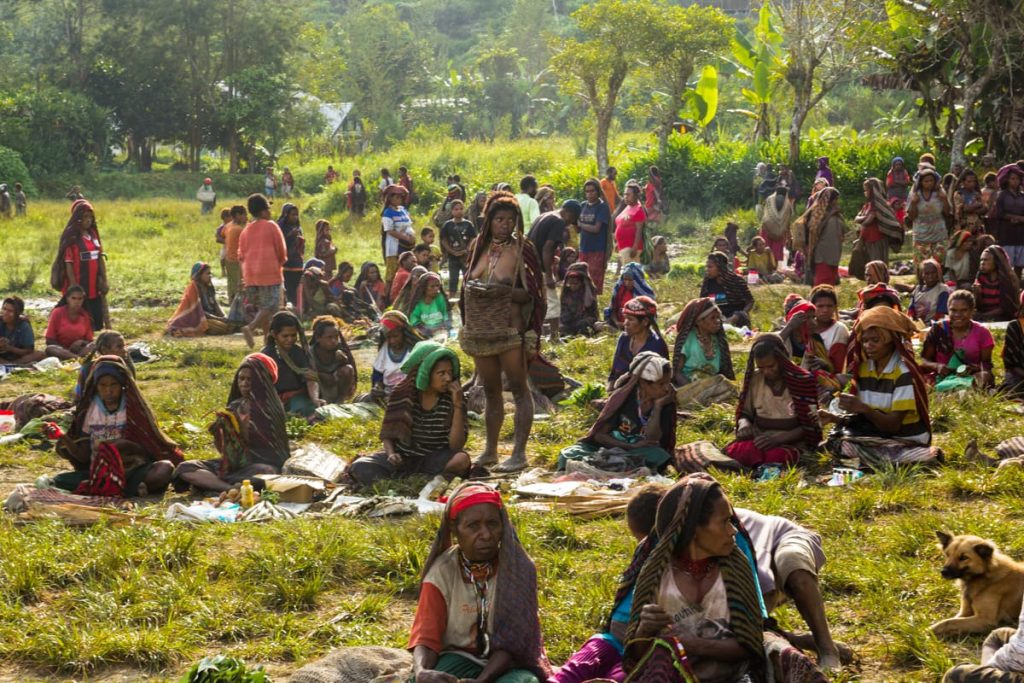
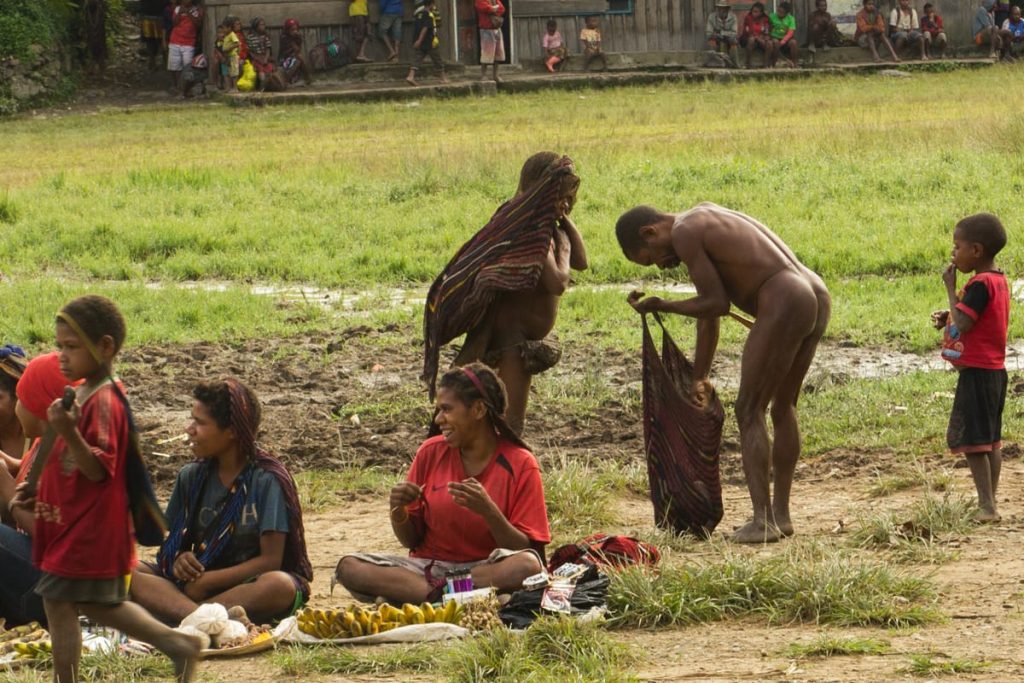
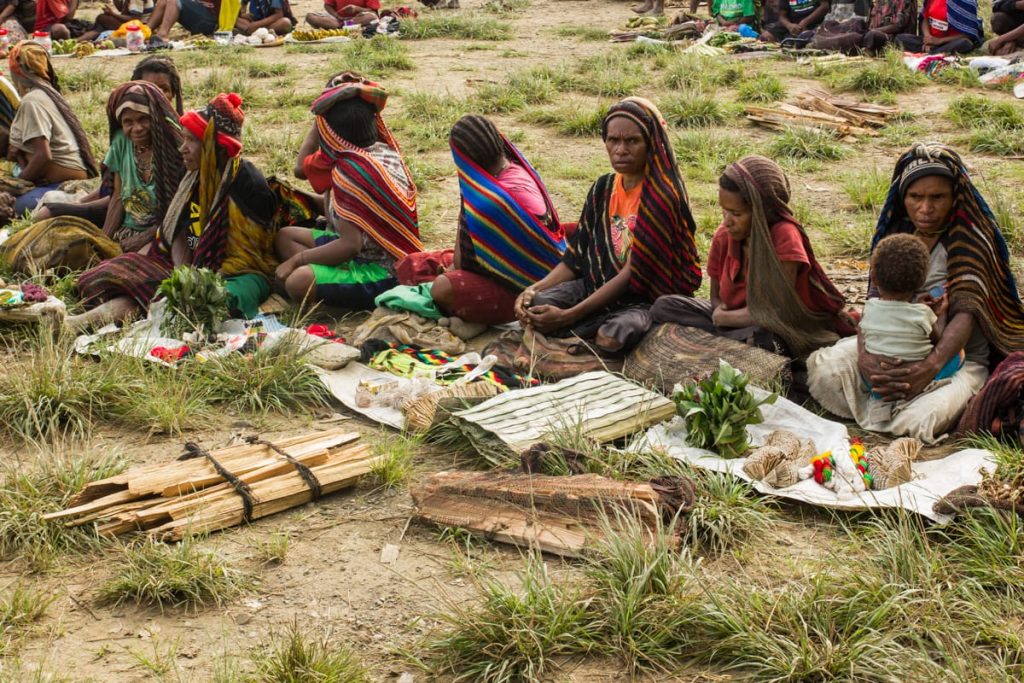
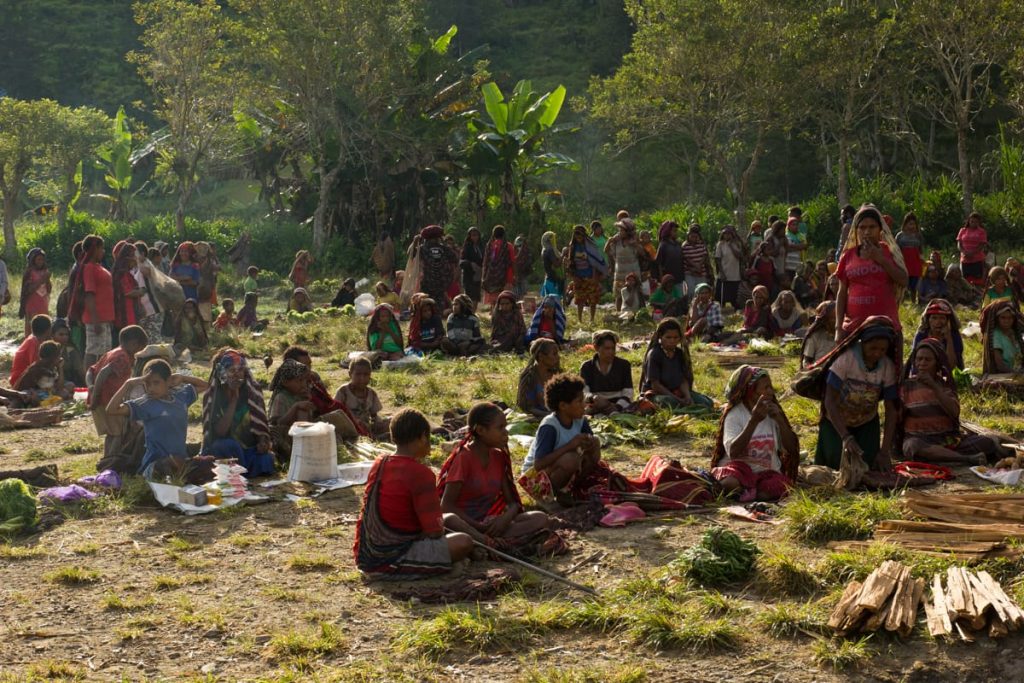
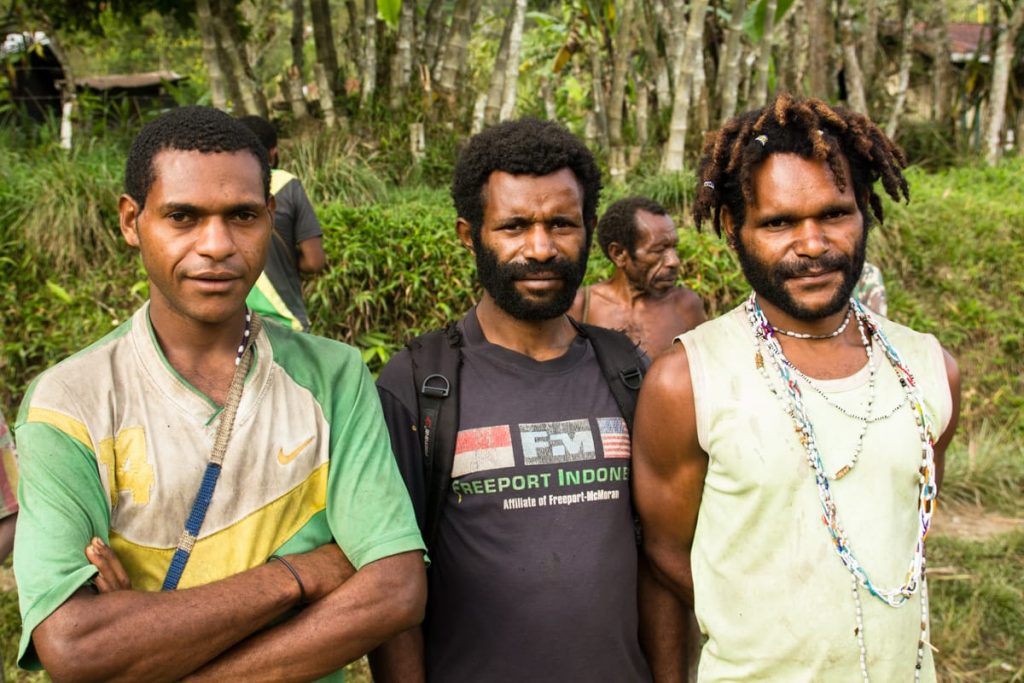
A great report.I have been in Irian Jaya in 1989, a lot changed. I still like it and I want to see it again.
Thanks Hans, must have been an incredible experience back then. Indeed much has changed but the way of life is still very traditional I think. They may have clothes, chainsaws and kitchenware but the culture is still strong, I hope it won’t change too much unless they want to.
By the way, since Gus Dur presidency in 2002, the name Irian Jaya shall not be used anymore. Locals prefer their land to be called Papua anyway. Even though some people from other provinces of Indonesia who have usually no bond whatsoever with Papua still call it Irian Jaya today.
Hi Elliot,
Great article, thanks for posting. My partner and I did almost the same trek just a few months before, just after Easter 2017. We were lucky enough to have Laszlo Wagner with us as a guide (our Indonesian would not have been good enough!). Laszlo helped us find Yali porters in Wamena who made the trekking easier, but it was still very tough, like you say. We slept in many of the same villages, but stayed in the Sugulhalma shelter on the plateau, which was an unworldly place to spend the night! It was a real privilege to watch MacGregor’s birds of paradise up there while the sun went down. We were also lucky enough to witness the market in Angguruk, and only had to wait a couple of nights for a missionary plane which took us all the way back to Jayapura. It definitely isn’t worth trying to aim for any of the scheduled flights, which never seemed to appear 🙂
hello Elliot 🙂
I hope this comment reaches you!
I am a female 36yo and am planning on doing this hike solo. Do you think it will be safe for me?
greetings & thanks for your insights!
Dear Lubba, if the question is whether it is safe to do it as a women traveling alone I would say yes. To be clear I am a male. If the question is whether doing this hike alone is safe I strongly advise against it, this is a very remote area that cannot be easily accessed in case of emergency. Hiring a local guide is essential in my opinion.
Hello, Can you provide me with contact information (e-mail, Whats app, Facebook messenger ) for someone that lives in the village of Angguruk. I have wildlife questions I need to ask for a future visit. Thank you jmcint6317@aol.com
Hi, I have absolutly no contact of anyone in Angguruk. Not even sure there is phone signal there (even though things might have changed since I’ve been there in 2017).
Good luck.
Hi Elliot,
I just hit on your report, while sorting old photos.
When I visited Angguruk in April 1980 I was the guest of a Dutch doctor, who ran a medical center. He lived there with his wife ad two kids.
It was not easy. To sterilize his surgical instruments in an autoclave he had to first start a generator powered by petrol. A small hydroelectric generator in a nearby river had been destroyed by heavy rain.
Would you know whether that center is still functional, maybe has been expanded upon?
Hi Theo,
If I remember well, I slept in the old dispensaries which may be the same building. I didn’t seem to be running anymore. Maybe it moved to another place. Angguruk was a fairly big village as I remember, I didn’t spend much time there as the flight back to Wamena came right the next day after I reached the village.
I remember there was some Indonesian lady (meaning not Papuan) staying in the village that received a lots of cargo by air, she was probably from the Church but I’m not that sure.
Missionary airlines run a fairly regular flight from and to Wamena, so maybe these days they just send people in town to get hospitalized ?